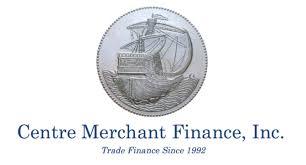Edited, memorised or added to reading queue
on 10-Feb-2018 (Sat)
Do you want BuboFlash to help you learning these things? Click here to log in or create user.
Flashcard 1448300907788
| status | not learned | measured difficulty | 37% [default] | last interval [days] | |||
|---|---|---|---|---|---|---|---|
| repetition number in this series | 0 | memorised on | scheduled repetition | ||||
| scheduled repetition interval | last repetition or drill |
Parent (intermediate) annotation
Open itManagers have access to additional financial information that can be reported in whatever format is most useful to their decision.
Original toplevel document
2. SCOPE OF FINANCIAL STATEMENT ANALYSISThe role of financial reporting by companies is to provide information about a company’s performance, financial position, and changes in financial position that is useful to a wide range of users in making economic decisions.1 The role of financial statement analysis is to use financial reports prepared by companies, combined with other information, to evaluate the past, current, and potential performance and financial position of a company for the purpose of making investment, credit, and other economic decisions. (Managers within a company perform financial analysis to make operating, investing, and financing decisions but do not necessarily rely on analysis of related financial statements. They have access to additional financial information that can be reported in whatever format is most useful to their decision.) In evaluating financial reports, analysts typically have a specific economic decision in mind. Examples of these decisions include the following: Evalu
Flashcard 1621243858188
| status | not learned | measured difficulty | 37% [default] | last interval [days] | |||
|---|---|---|---|---|---|---|---|
| repetition number in this series | 0 | memorised on | scheduled repetition | ||||
| scheduled repetition interval | last repetition or drill |
In calculating the cash payments for other operating expenses, which of the following items must a company add to the other operating expenses reported on the income statement?
An increase in prepaid expenses must be added to the other operating expenses reported on the income statement to calculate the cash payments for other operating expenses. An increase in prepaid expenses represents an outflow of cash that is not yet reported on the income statement as an expense.
Flashcard 1637283138828
| status | not learned | measured difficulty | 37% [default] | last interval [days] | |||
|---|---|---|---|---|---|---|---|
| repetition number in this series | 0 | memorised on | scheduled repetition | ||||
| scheduled repetition interval | last repetition or drill |
Flashcard 1644895800588
| status | not learned | measured difficulty | 37% [default] | last interval [days] | |||
|---|---|---|---|---|---|---|---|
| repetition number in this series | 0 | memorised on | scheduled repetition | ||||
| scheduled repetition interval | last repetition or drill |
Flashcard 1731531509004
| status | not learned | measured difficulty | 37% [default] | last interval [days] | |||
|---|---|---|---|---|---|---|---|
| repetition number in this series | 0 | memorised on | scheduled repetition | ||||
| scheduled repetition interval | last repetition or drill |
Parent (intermediate) annotation
Open itThe new method uses an approximate Expectation Propagation procedure and a novel and efficient ex- tension of the probabilistic backpropagation algorithm for learning.
Original toplevel document (pdf)
cannot see any pdfsFlashcard 1731595996428
| status | not learned | measured difficulty | 37% [default] | last interval [days] | |||
|---|---|---|---|---|---|---|---|
| repetition number in this series | 0 | memorised on | scheduled repetition | ||||
| scheduled repetition interval | last repetition or drill |
Parent (intermediate) annotation
Open itMarcus Aurelius ( / ɔː ˈ r iː l i ə s / ; Latin: Marcus Aurelius Antoninus Augustus ; [6] [notes 1] [9] 26 April 121 – 17 March 180 AD) was Roman emperor from 161 to 180
Original toplevel document
Marcus Aurelius - Wikipediaesar (as imperial heir) Imperator Caesar Marcus Aurelius Antoninus Augustus (upon joint ascension, with Lucius Verus, to the throne [4] ) Dynasty Antonine Father Marcus Annius Verus Antoninus Pius (adoptive) Mother Domitia Lucilla <span>Marcus Aurelius (/ɔːˈriːliəs/; Latin: Marcus Aurelius Antoninus Augustus; [6] [notes 1] [9] 26 April 121 – 17 March 180 AD) was Roman emperor from 161 to 180, ruling jointly with Lucius Verus until Verus' death in 169 and jointly with his son, Commodus, from 177. He was the last of the so-called Five Good Emperors. He was a practitioner of
Flashcard 1731706096908
| status | not learned | measured difficulty | 37% [default] | last interval [days] | |||
|---|---|---|---|---|---|---|---|
| repetition number in this series | 0 | memorised on | scheduled repetition | ||||
| scheduled repetition interval | last repetition or drill |
Parent (intermediate) annotation
Open itThe Black–Scholes / ˌ b l æ k ˈ ʃ oʊ l z / [1] or Black–Scholes–Merton model is a mathematical model of a financial market containing derivative investment instruments. From the partial differential equation in the model, known as the Black–Scholes equation, one can deduce the Black–Scholes formula, which gives a theoretical estimate of the price of European-style options and shows that the option has a
Original toplevel document
Black–Scholes model - WikipediaBlack–Scholes model - Wikipedia Black–Scholes model From Wikipedia, the free encyclopedia (Redirected from Black–Scholes) Jump to: navigation, search The Black–Scholes /ˌblæk ˈʃoʊlz/ [1] or Black–Scholes–Merton model is a mathematical model of a financial market containing derivative investment instruments. From the partial differential equation in the model, known as the Black–Scholes equation, one can deduce the Black–Scholes formula, which gives a theoretical estimate of the price of European-style options and shows that the option has a unique price regardless of the risk of the security and its expected return (instead replacing the security's expected return with the risk-neutral rate). The formula led to a boom in options trading and provided mathematical legitimacy to the activities of the Chicago Board Options Exchange and other options markets around the world. [2]
Flashcard 1731709242636
| status | not learned | measured difficulty | 37% [default] | last interval [days] | |||
|---|---|---|---|---|---|---|---|
| repetition number in this series | 0 | memorised on | scheduled repetition | ||||
| scheduled repetition interval | last repetition or drill |
Parent (intermediate) annotation
Open itnt instruments. From the partial differential equation in the model, known as the Black–Scholes equation, one can deduce the Black–Scholes formula, which gives a theoretical estimate of the price of European-style options and shows that <span>the option has a unique price regardless of the risk of the security and its expected return (instead replacing the security's expected return with the risk-neutral rate). <span><body><html>
Original toplevel document
Black–Scholes model - WikipediaBlack–Scholes model - Wikipedia Black–Scholes model From Wikipedia, the free encyclopedia (Redirected from Black–Scholes) Jump to: navigation, search The Black–Scholes /ˌblæk ˈʃoʊlz/ [1] or Black–Scholes–Merton model is a mathematical model of a financial market containing derivative investment instruments. From the partial differential equation in the model, known as the Black–Scholes equation, one can deduce the Black–Scholes formula, which gives a theoretical estimate of the price of European-style options and shows that the option has a unique price regardless of the risk of the security and its expected return (instead replacing the security's expected return with the risk-neutral rate). The formula led to a boom in options trading and provided mathematical legitimacy to the activities of the Chicago Board Options Exchange and other options markets around the world. [2]
Flashcard 1738057583884
| status | not learned | measured difficulty | 37% [default] | last interval [days] | |||
|---|---|---|---|---|---|---|---|
| repetition number in this series | 0 | memorised on | scheduled repetition | ||||
| scheduled repetition interval | last repetition or drill |
Parent (intermediate) annotation
Open itThe GIPS standards are a practitioner-driven set of ethical principles that establish a standardized, industry-wide approach for investment firms to follow in calculating and presenting their historical investment results to prospective clients. The GIPS s
Original toplevel document
Reading 4 Introduction to the Global Investment Performance Standards (GIPS®)l investment management firms was problematic. For example, a pension fund seeking to hire an investment management firm might receive proposals from several firms, all using different methodologies for calculating their results. <span>The GIPS standards are a practitioner-driven set of ethical principles that establish a standardized, industry-wide approach for investment firms to follow in calculating and presenting their historical investment results to prospective clients. The GIPS standards ensure fair representation and full disclosure of investment performance. In other words, the GIPS standards lead investment management firms to avoid misrepresentations of performance and to communicate all relevant information that prospective clients should know in order to evaluate past results. <span><body><html>
| status | not read | reprioritisations | ||
|---|---|---|---|---|
| last reprioritisation on | suggested re-reading day | |||
| started reading on | finished reading on |
Open it
mally compensated through salary, bonuses, equity based remuneration (or compensation). As a result, managers may be motivated to maximize the value of their total remuneration while also protecting their employment positions. <span>3.1.4 Board of Directors A company’s board of directors is elected by shareholders to protect shareholders’ interests, provide strategic direction, and monitor company and management performance. 3.1.5 Customers Customers expect a company’s products or services to satisfy their needs and provide appropriate benefits given the price paid, as well as to meet a
| status | not read | reprioritisations | ||
|---|---|---|---|---|
| last reprioritisation on | suggested re-reading day | |||
| started reading on | finished reading on |
Subject 9. ESG Considerations for Investors
ESG integration is the practice of considering environmental, social, and governance factors in the investment process. It can be implemented across all asset classes. ESG Factors in Investment Analysis Environmental factors include natural resource management, pollution prevention, water conservation, energy efficiency and
| status | not read | reprioritisations | ||
|---|---|---|---|---|
| last reprioritisation on | suggested re-reading day | |||
| started reading on | finished reading on |
Parent (intermediate) annotation
Open itinvestor retains ownership and control of his own shares. An investment fund provides a broader selection of investment opportunities, greater management expertise and lower investment fees than investors might be able to obtain on their own. <span>Types of investment funds include mutual funds, exchange-traded funds, money market funds and hedge funds. <span><body><html>
Original toplevel document
Investment FundWhat is an 'Investment Fund' <span>An investment fund is a supply of capital belonging to numerous investors used to collectively purchase securities while each investor retains ownership and control of his own shares. An investment fund provides a broader selection of investment opportunities, greater management expertise and lower investment fees than investors might be able to obtain on their own. Types of investment funds include mutual funds, exchange-traded funds, money market funds and hedge funds. BREAKING DOWN 'Investment Fund' With investment funds, individual investors do not make decisions about how a fund's assets should be invested. Th
| status | not read | reprioritisations | ||
|---|---|---|---|---|
| last reprioritisation on | suggested re-reading day | |||
| started reading on | finished reading on |
Parent (intermediate) annotation
Open itReaders will be introduced to the definition of credit risk, the interpretation of credit ratings, the four Cs of traditional credit analysis , and key financial measures and ratios used in credit analysis. The reading explains, among other things, how to compare bond issuer creditworthiness within a given industry as well as across industries and how credit risk is priced in the bond mark
Original toplevel document
Reading 55 Fundamentals of Credit Analysis (Intro)With bonds outstanding worth many trillions of US dollars, the debt markets play a critical role in the global economy. Companies and governments raise capital in the debt market to fund current operations; buy equipment; build factories, roads, bridges, airports, and hospitals; acquire assets, and so on. By channeling savings into productive investments, the debt markets facilitate economic growth. Credit analysis has a crucial function in the debt capital markets—efficiently allocating capital by properly assessing credit risk, pricing it accordingly, and repricing it as risks change. How do fixed-income investors determine the riskiness of that debt, and how do they decide what they need to earn as compensation for that risk? This reading covers basic principles of credit analysis, which may be broadly defined as the process by which credit risk is evaluated. Readers will be introduced to the definition of credit risk, the interpretation of credit ratings, the four Cs of traditional credit analysis, and key financial measures and ratios used in credit analysis. The reading explains, among other things, how to compare bond issuer creditworthiness within a given industry as well as across industries and how credit risk is priced in the bond market. The reading focuses primarily on analysis of corporate debt; however, credit analysis of sovereign and non-sovereign, particularly municipal, government bonds will also be addressed. Structured finance, a segment of the debt markets that includes securities backed by pools of assets, such as residential and commercial mortgages as well as other consumer loans, will not be covered here. The key components of credit risk—default probability and loss severity—are introduced in the next section along with such credit-related risks as spread risk, credit migra
Flashcard 1748547013900
| status | not learned | measured difficulty | 37% [default] | last interval [days] | |||
|---|---|---|---|---|---|---|---|
| repetition number in this series | 0 | memorised on | scheduled repetition | ||||
| scheduled repetition interval | last repetition or drill |
Parent (intermediate) annotation
Open itMisleading practices included: Survivorship Bias : Presenting an “average” performance history that excludes portfolios whose poor performance was weak enough to result in termination of the firm.
Original toplevel document
Reading 4 Introduction to the Global Investment Performance Standards (GIPS®)nvestment performance data. Several performance measurement practices hindered the comparability of performance returns from one firm to another, while others called into question the accuracy and credibility of performance reporting overall. <span>Misleading practices included: Representative Accounts: Selecting a top-performing portfolio to represent the firm’s overall investment results for a specific mandate. Survivorship Bias: Presenting an “average” performance history that excludes portfolios whose poor performance was weak enough to result in termination of the firm. Varying Time Periods: Presenting performance for a selected time period during which the mandate produced excellent returns or out-performed its benchmark—making comparison with other firms’ results difficult or impossible. Making a valid comparison of investment performance among even the most ethical investment management firms was problematic. For example, a pension fund seeking to
Flashcard 1750242823436
| status | not learned | measured difficulty | 37% [default] | last interval [days] | |||
|---|---|---|---|---|---|---|---|
| repetition number in this series | 0 | memorised on | scheduled repetition | ||||
| scheduled repetition interval | last repetition or drill |
Parent (intermediate) annotation
Open itBefore we can begin to understand how monetary policy is implemented, we must examine the functions and role of money . We can then explore the special role that central banks play in today’s economies.
Original toplevel document
2. Monetary PolicyAs stated above, monetary policy refers to government or central bank activities that are directed toward influencing the quantity of money and credit in an economy. Before we can begin to understand how monetary policy is implemented, we must examine the functions and role of money . We can then explore the special role that central banks play in today’s economies.
Flashcard 1750248066316
| status | not learned | measured difficulty | 37% [default] | last interval [days] | |||
|---|---|---|---|---|---|---|---|
| repetition number in this series | 0 | memorised on | scheduled repetition | ||||
| scheduled repetition interval | last repetition or drill |
Parent (intermediate) annotation
Open itThe most generic definition of money is that it is any generally accepted medium of exchange. A medium of exchange is any asset that can be used to purchase goods and services or to repay debts. Money can thus eliminate the debilitating double coincidence of the “wants” problem
Original toplevel document
Money: the price of oranges in terms of pears; of pears in terms of bread; of bread in terms of milk; or of milk in terms of oranges. A barter economy has no common measure of value that would make multiple transactions simple. <span>2.1.1. The Functions of Money The most generic definition of money is that it is any generally accepted medium of exchange. A medium of exchange is any asset that can be used to purchase goods and services or to repay debts. Money can thus eliminate the debilitating double coincidence of the “wants” problem that exists in a barter economy. When this medium of exchange exists, a farmer wishing to sell wheat for wine does not need to identify a wine producer in search of wheat. Instead, he can sell wheat to those who want wheat in exchange for money. The farmer can then exchange this money for wine with a wine producer, who in turn can exchange that money for the goods or services that she wants. However, for money to act as this liberating medium of exchange, it must possess certain qualities. It must: be readily acceptable, have a known value, be easily divisible, have a high value relative to its weight, and be difficult to counterfeit. Qualities (i) and (ii) are closely related; the medium of exchange will only be acceptable if it has a known value. If the medium of exchange has quality (iii), then it can be used to purchase items of relatively little value and of relatively large value with equal ease. Having a high value relative to its weight is a practical convenience, meaning that people can carry around sufficient wealth for their transaction needs. Finally, if the medium of exchange can be counterfeited easily, then it would soon cease to have a value and would not be readily acceptable as a means of effecting transactions; in other words, it would not satisfy qualities (i) and (ii). Given the qualities that money needs to have, it is clear why precious metals (particularly gold and silver) often fulfilled the role of medium of exchange in early societies, and as recently as the early part of the twentieth century. Precious metals were acceptable as a medium of exchange because they had a known value, were easily divisible, had a high value relative to their weight, and could not be easily counterfeited. Thus, precious metals were capable of acting as a medium of exchange. But they also fulfilled two other useful functions that are essential for the characteristics of money. In a barter economy, it is difficult to store wealth from one year to the next when one’s produce is perishable, or indeed, if it requires large warehouses in which to store it. Because precious metals like gold had a high value relative to their bulk and were not perishable, they could act as a store of wealth . However, their ability to act as a store of wealth not only depended on the fact that they did not perish physically over time, but also on the belief that others would always value precious metals. The value from year to year of precious metals depended on people’s continued demand for them in ornaments, jewellery, and so on. For example, people were willing to use gold as a store of wealth because they believed that it would remain highly valued. However, if gold became less valuable to people relative to other goods and services year after year it would not be able to fulfill its role as a store of value , and as such might also lose its status as a medium of exchange. Another important characteristic of money is that it can be used as a universal unit of account. As such, it can create a single unitary measure of value for all goods and services. In an economy where gold and silver are the accepted medium of exchange, all prices, debts, and wealth can be recorded in terms of their gold or silver coin exchange value. Money, in its role as a unit of account, drastically reduces the number of prices in an economy compared to barter, which requires that prices be established for a good in terms of all other goods for which it might be exchanged. In summary, money fulfills three important functions, it: acts as a medium of exchange; provides individuals with a way of storing wealth; and provides society with a convenient measure of value and unit of account. 2.1.2. Paper Money and the Money Creation Process Although precious metals like gold and silver fulfilled the required functions of money
| status | not read | reprioritisations | ||
|---|---|---|---|---|
| last reprioritisation on | suggested re-reading day | |||
| started reading on | finished reading on |
Parent (intermediate) annotation
Open itThe study of the profit-maximizing firm in a single time period is the essential starting point for the analysis of the economics of corporate decision making. Furthermore, with the attention given to earnings by market participants, the insights gained by this study should be practically relevant. Among the questions this reading will address
Original toplevel document
Prerequisite Demand and Supply Analysis: The firmf this reading is the cost side of the profit equation for companies competing in market economies under perfect competition. A subsequent reading will examine the different types of markets into which a firm may sell its output. <span>The study of the profit-maximizing firm in a single time period is the essential starting point for the analysis of the economics of corporate decision making. Furthermore, with the attention given to earnings by market participants, the insights gained by this study should be practically relevant. Among the questions this reading will address are the following: How should profit be defined from the perspective of suppliers of capital to the firm? What is meant by factors of production? How are total, average, and marginal costs distinguished, and how is each related to the firm’s profit? What roles do marginal quantities (selling prices and costs) play in optimization? This reading is organized as follows: Section 2 discusses the types of profit measures, including what they have in common, how they differ, and their us
| status | not read | reprioritisations | ||
|---|---|---|---|---|
| last reprioritisation on | suggested re-reading day | |||
| started reading on | finished reading on |
Parent (intermediate) annotation
Open itperiod is the essential starting point for the analysis of the economics of corporate decision making. Furthermore, with the attention given to earnings by market participants, the insights gained by this study should be practically relevant. <span>Among the questions this reading will address are the following: How should profit be defined from the perspective of suppliers of capital to the firm? What is meant by factors of production? How are total, average, and marginal costs distinguished, and how is each related to the firm’s profit? What roles do marginal quantities (selling prices
Original toplevel document
Prerequisite Demand and Supply Analysis: The firmf this reading is the cost side of the profit equation for companies competing in market economies under perfect competition. A subsequent reading will examine the different types of markets into which a firm may sell its output. <span>The study of the profit-maximizing firm in a single time period is the essential starting point for the analysis of the economics of corporate decision making. Furthermore, with the attention given to earnings by market participants, the insights gained by this study should be practically relevant. Among the questions this reading will address are the following: How should profit be defined from the perspective of suppliers of capital to the firm? What is meant by factors of production? How are total, average, and marginal costs distinguished, and how is each related to the firm’s profit? What roles do marginal quantities (selling prices and costs) play in optimization? This reading is organized as follows: Section 2 discusses the types of profit measures, including what they have in common, how they differ, and their us
| status | not read | reprioritisations | ||
|---|---|---|---|---|
| last reprioritisation on | suggested re-reading day | |||
| started reading on | finished reading on |
Parent (intermediate) annotation
Open itong the questions this reading will address are the following: How should profit be defined from the perspective of suppliers of capital to the firm? What is meant by factors of production? <span>How are total, average, and marginal costs distinguished, and how is each related to the firm’s profit? What roles do marginal quantities (selling prices and costs) play in optimization? <span><body><html>
Original toplevel document
Prerequisite Demand and Supply Analysis: The firmf this reading is the cost side of the profit equation for companies competing in market economies under perfect competition. A subsequent reading will examine the different types of markets into which a firm may sell its output. <span>The study of the profit-maximizing firm in a single time period is the essential starting point for the analysis of the economics of corporate decision making. Furthermore, with the attention given to earnings by market participants, the insights gained by this study should be practically relevant. Among the questions this reading will address are the following: How should profit be defined from the perspective of suppliers of capital to the firm? What is meant by factors of production? How are total, average, and marginal costs distinguished, and how is each related to the firm’s profit? What roles do marginal quantities (selling prices and costs) play in optimization? This reading is organized as follows: Section 2 discusses the types of profit measures, including what they have in common, how they differ, and their us
| status | not read | reprioritisations | ||
|---|---|---|---|---|
| last reprioritisation on | suggested re-reading day | |||
| started reading on | finished reading on |
Parent (intermediate) annotation
Open itThe focus of this reading is on the short-term aspects of corporate finance activities collectively referred to as working capital management . The goal of effective working capital management is to ensure that a company has adequate ready access to the funds necessary for day-to-day operating expenses, while at the same time making sure that the company’s assets are invested in the most productive way. Achieving this goal requires a balancing of concerns. Insufficient access to cash could ultimately lead to severe restructuring of a company by selling off assets, reorganization via ba
Original toplevel document
Reading 38 Working Capital Management IntroThe focus of this reading is on the short-term aspects of corporate finance activities collectively referred to as working capital management . The goal of effective working capital management is to ensure that a company has adequate ready access to the funds necessary for day-to-day operating expenses, while at the same time making sure that the company’s assets are invested in the most productive way. Achieving this goal requires a balancing of concerns. Insufficient access to cash could ultimately lead to severe restructuring of a company by selling off assets, reorganization via bankruptcy proceedings, or final liquidation of the company. On the other hand, excessive investment in cash and liquid assets may not be the best use of company resources. Effective working capital management encompasses several aspects of short-term finance: maintaining adequate levels of cash, converting short-term assets (i.e., accounts receivable and inventory) into cash, and controlling outgoing payments to vendors, employees, and others. To do this successfully, companies invest short-term funds in working capital portfolios of short-dated, highly liquid securities, or they maintain credit reserves in the form of bank lines of credit or access to financing by issuing commercial paper or other money market instruments. Working capital management is a broad-based function. Effective execution requires managing and coordinating several tasks within the company, including managing short-term investments, granting credit to customers and collecting on this credit, managing inventory, and managing payables. Effective working capital management also requires reliable cash forecasts, as well as current and accurate information on transactions and bank balances. Both internal and external factors influence working capital needs; we summarize them in Exhibit 1. Exhibit 1. Internal and External Factors That Affect Working Capit
| status | not read | reprioritisations | ||
|---|---|---|---|---|
| last reprioritisation on | suggested re-reading day | |||
| started reading on | finished reading on |
Parent (intermediate) annotation
Open itny has adequate ready access to the funds necessary for day-to-day operating expenses, while at the same time making sure that the company’s assets are invested in the most productive way. Achieving this goal requires a balancing of concerns. <span>Insufficient access to cash could ultimately lead to severe restructuring of a company by selling off assets, reorganization via bankruptcy proceedings, or final liquidation of the company. On the other hand, excessive investment in cash and liquid assets may not be the best use of company resources. <span><body><html>
Original toplevel document
Reading 38 Working Capital Management IntroThe focus of this reading is on the short-term aspects of corporate finance activities collectively referred to as working capital management . The goal of effective working capital management is to ensure that a company has adequate ready access to the funds necessary for day-to-day operating expenses, while at the same time making sure that the company’s assets are invested in the most productive way. Achieving this goal requires a balancing of concerns. Insufficient access to cash could ultimately lead to severe restructuring of a company by selling off assets, reorganization via bankruptcy proceedings, or final liquidation of the company. On the other hand, excessive investment in cash and liquid assets may not be the best use of company resources. Effective working capital management encompasses several aspects of short-term finance: maintaining adequate levels of cash, converting short-term assets (i.e., accounts receivable and inventory) into cash, and controlling outgoing payments to vendors, employees, and others. To do this successfully, companies invest short-term funds in working capital portfolios of short-dated, highly liquid securities, or they maintain credit reserves in the form of bank lines of credit or access to financing by issuing commercial paper or other money market instruments. Working capital management is a broad-based function. Effective execution requires managing and coordinating several tasks within the company, including managing short-term investments, granting credit to customers and collecting on this credit, managing inventory, and managing payables. Effective working capital management also requires reliable cash forecasts, as well as current and accurate information on transactions and bank balances. Both internal and external factors influence working capital needs; we summarize them in Exhibit 1. Exhibit 1. Internal and External Factors That Affect Working Capit
Flashcard 1751174483212
| status | not learned | measured difficulty | 37% [default] | last interval [days] | |||
|---|---|---|---|---|---|---|---|
| repetition number in this series | 0 | memorised on | scheduled repetition | ||||
| scheduled repetition interval | last repetition or drill |
Parent (intermediate) annotation
Open it3.1.4 Board of Directors A company’s board of directors is elected by shareholders to protect shareholders’ interests, provide strategic direction, and monitor company and management performance.
Original toplevel document
Open itmally compensated through salary, bonuses, equity based remuneration (or compensation). As a result, managers may be motivated to maximize the value of their total remuneration while also protecting their employment positions. <span>3.1.4 Board of Directors A company’s board of directors is elected by shareholders to protect shareholders’ interests, provide strategic direction, and monitor company and management performance. 3.1.5 Customers Customers expect a company’s products or services to satisfy their needs and provide appropriate benefits given the price paid, as well as to meet a
Flashcard 1751183658252
| status | not learned | measured difficulty | 37% [default] | last interval [days] | |||
|---|---|---|---|---|---|---|---|
| repetition number in this series | 0 | memorised on | scheduled repetition | ||||
| scheduled repetition interval | last repetition or drill |
Parent (intermediate) annotation
Open itESG integration is the practice of considering environmental, social, and governance factors in the investment process. It can be implemented across all asset classes.
Original toplevel document
Subject 9. ESG Considerations for InvestorsESG integration is the practice of considering environmental, social, and governance factors in the investment process. It can be implemented across all asset classes. ESG Factors in Investment Analysis Environmental factors include natural resource management, pollution prevention, water conservation, energy efficiency and
| status | not read | reprioritisations | ||
|---|---|---|---|---|
| last reprioritisation on | suggested re-reading day | |||
| started reading on | finished reading on |
Parent (intermediate) annotation
Open itFundamental analysis uses information about the economy, industry, and company as the basis for investment decisions. Examples of fundamentals are unemployment rates, gross domestic product (GDP) growth, industry growth, and quality of and growth in company earnings.
Original toplevel document
Reading 49 Equity Valuation: Concepts and Basic Tools (Intro)Analysts gather and process information to make investment decisions, including buy and sell recommendations. What information is gathered and how it is processed depend on the analyst and the purpose of the analysis. Technical analysis uses such information as stock price and trading volume as the basis for investment decisions. Fundamental analysis uses information about the economy, industry, and company as the basis for investment decisions. Examples of fundamentals are unemployment rates, gross domestic product (GDP) growth, industry growth, and quality of and growth in company earnings. Whereas technical analysts use information to predict price movements and base investment decisions on the direction of predicted change in prices, fundamental analysts use information to estimate the value of a security and to compare the estimated value to the market price and then base investment decisions on that comparison. This reading introduces equity valuation models used to estimate the intrinsic value (synonym: fundamental value ) of a security; intrinsic value is based on an analysis of investment fundamentals and characteristics. The fundamentals to be considered depend on the analyst’s approach to valuation. In a top-down approach, an analyst examines the economic environment, identifies sectors that are expected to prosper in that environment, and analyzes securities of companies from previously identified attractive sectors. In a bottom-up approach, an analyst typically follows an industry or industries and forecasts fundamentals for the companies in those industries in order to determine valuation. Whatever the approach, an analyst who estimates the intrinsic value of an equity security is implicitly questioning the accuracy of the market price as an estimate of value. Valuation is particularly important in active equity portfolio management, which aims to improve on the return–risk trade-off of a portfolio’s benchmark by identifying mispriced securities. This reading is organized as follows. Section 2 discusses the implications of differences between estimated value and market price. Section 3 introduces three major categor
| status | not read | reprioritisations | ||
|---|---|---|---|---|
| last reprioritisation on | suggested re-reading day | |||
| started reading on | finished reading on |
Parent (intermediate) annotation
Open itFundamental analysis uses information about the economy, industry, and company as the basis for investment decisions. Examples of fundamentals are unemployment rates, gross domestic product (GDP) growth, industry growth, and quality of and growth in company earnings.
Original toplevel document
Reading 49 Equity Valuation: Concepts and Basic Tools (Intro)Analysts gather and process information to make investment decisions, including buy and sell recommendations. What information is gathered and how it is processed depend on the analyst and the purpose of the analysis. Technical analysis uses such information as stock price and trading volume as the basis for investment decisions. Fundamental analysis uses information about the economy, industry, and company as the basis for investment decisions. Examples of fundamentals are unemployment rates, gross domestic product (GDP) growth, industry growth, and quality of and growth in company earnings. Whereas technical analysts use information to predict price movements and base investment decisions on the direction of predicted change in prices, fundamental analysts use information to estimate the value of a security and to compare the estimated value to the market price and then base investment decisions on that comparison. This reading introduces equity valuation models used to estimate the intrinsic value (synonym: fundamental value ) of a security; intrinsic value is based on an analysis of investment fundamentals and characteristics. The fundamentals to be considered depend on the analyst’s approach to valuation. In a top-down approach, an analyst examines the economic environment, identifies sectors that are expected to prosper in that environment, and analyzes securities of companies from previously identified attractive sectors. In a bottom-up approach, an analyst typically follows an industry or industries and forecasts fundamentals for the companies in those industries in order to determine valuation. Whatever the approach, an analyst who estimates the intrinsic value of an equity security is implicitly questioning the accuracy of the market price as an estimate of value. Valuation is particularly important in active equity portfolio management, which aims to improve on the return–risk trade-off of a portfolio’s benchmark by identifying mispriced securities. This reading is organized as follows. Section 2 discusses the implications of differences between estimated value and market price. Section 3 introduces three major categor
Flashcard 1751190473996
| status | not learned | measured difficulty | 37% [default] | last interval [days] | |||
|---|---|---|---|---|---|---|---|
| repetition number in this series | 0 | memorised on | scheduled repetition | ||||
| scheduled repetition interval | last repetition or drill |
Parent (intermediate) annotation
Open itValuation is particularly important in active equity portfolio management, which aims to improve on the return–risk trade-off of a portfolio’s benchmark by identifying mispriced securities.
Original toplevel document
Reading 49 Equity Valuation: Concepts and Basic Tools (Intro)Analysts gather and process information to make investment decisions, including buy and sell recommendations. What information is gathered and how it is processed depend on the analyst and the purpose of the analysis. Technical analysis uses such information as stock price and trading volume as the basis for investment decisions. Fundamental analysis uses information about the economy, industry, and company as the basis for investment decisions. Examples of fundamentals are unemployment rates, gross domestic product (GDP) growth, industry growth, and quality of and growth in company earnings. Whereas technical analysts use information to predict price movements and base investment decisions on the direction of predicted change in prices, fundamental analysts use information to estimate the value of a security and to compare the estimated value to the market price and then base investment decisions on that comparison. This reading introduces equity valuation models used to estimate the intrinsic value (synonym: fundamental value ) of a security; intrinsic value is based on an analysis of investment fundamentals and characteristics. The fundamentals to be considered depend on the analyst’s approach to valuation. In a top-down approach, an analyst examines the economic environment, identifies sectors that are expected to prosper in that environment, and analyzes securities of companies from previously identified attractive sectors. In a bottom-up approach, an analyst typically follows an industry or industries and forecasts fundamentals for the companies in those industries in order to determine valuation. Whatever the approach, an analyst who estimates the intrinsic value of an equity security is implicitly questioning the accuracy of the market price as an estimate of value. Valuation is particularly important in active equity portfolio management, which aims to improve on the return–risk trade-off of a portfolio’s benchmark by identifying mispriced securities. This reading is organized as follows. Section 2 discusses the implications of differences between estimated value and market price. Section 3 introduces three major categor
Flashcard 1751192833292
| status | not learned | measured difficulty | 37% [default] | last interval [days] | |||
|---|---|---|---|---|---|---|---|
| repetition number in this series | 0 | memorised on | scheduled repetition | ||||
| scheduled repetition interval | last repetition or drill |
Parent (intermediate) annotation
Open itValuation is particularly important in active equity portfolio management, which aims to improve on the return–risk trade-off of a portfolio’s benchmark by identifying mispriced securities.
Original toplevel document
Reading 49 Equity Valuation: Concepts and Basic Tools (Intro)Analysts gather and process information to make investment decisions, including buy and sell recommendations. What information is gathered and how it is processed depend on the analyst and the purpose of the analysis. Technical analysis uses such information as stock price and trading volume as the basis for investment decisions. Fundamental analysis uses information about the economy, industry, and company as the basis for investment decisions. Examples of fundamentals are unemployment rates, gross domestic product (GDP) growth, industry growth, and quality of and growth in company earnings. Whereas technical analysts use information to predict price movements and base investment decisions on the direction of predicted change in prices, fundamental analysts use information to estimate the value of a security and to compare the estimated value to the market price and then base investment decisions on that comparison. This reading introduces equity valuation models used to estimate the intrinsic value (synonym: fundamental value ) of a security; intrinsic value is based on an analysis of investment fundamentals and characteristics. The fundamentals to be considered depend on the analyst’s approach to valuation. In a top-down approach, an analyst examines the economic environment, identifies sectors that are expected to prosper in that environment, and analyzes securities of companies from previously identified attractive sectors. In a bottom-up approach, an analyst typically follows an industry or industries and forecasts fundamentals for the companies in those industries in order to determine valuation. Whatever the approach, an analyst who estimates the intrinsic value of an equity security is implicitly questioning the accuracy of the market price as an estimate of value. Valuation is particularly important in active equity portfolio management, which aims to improve on the return–risk trade-off of a portfolio’s benchmark by identifying mispriced securities. This reading is organized as follows. Section 2 discusses the implications of differences between estimated value and market price. Section 3 introduces three major categor
| status | not read | reprioritisations | ||
|---|---|---|---|---|
| last reprioritisation on | suggested re-reading day | |||
| started reading on | finished reading on |
Parent (intermediate) annotation
Open itThe cash-based information provided by the cash flow statement contrasts with the accrual-based information from the income statement. For example, the income statement reflects revenues when earned rather than when cash is collected; in contrast, the cash flow statement reflects cash receipts when collected as opposed to when the revenue was earned.
Original toplevel document
Reading 26 Understanding Cash Flow Statements IntroductionThe cash flow statement provides information about a company’s cash receipts and cash payments during an accounting period. The cash-based information provided by the cash flow statement contrasts with the accrual-based information from the income statement. For example, the income statement reflects revenues when earned rather than when cash is collected; in contrast, the cash flow statement reflects cash receipts when collected as opposed to when the revenue was earned. A reconciliation between reported income and cash flows from operating activities provides useful information about when, whether, and how a company is able to generate cash from its operating activities. Although income is an important measure of the results of a company’s activities, cash flow is also essential. As an extreme illustration, a hypothetical company that makes all sales on account, without regard to whether it will ever collect its accounts receivable, would report healthy sales on its income statement and might well report significant income; however, with zero cash inflow, the company would not survive. The cash flow statement also provides a reconciliation of the beginning and ending cash on the balance sheet. In addition to information about cash generated (or, alternatively, cash used) in operating activities, the cash flow statement provides information about cash provided (or used) in a company’s investing and financing activities. This information allows the analyst to answer such questions as: Does the company generate enough cash from its operations to pay for its new investments, or is the company relying on new debt issuance to finance them? Does the company pay its dividends to common stockholders using cash generated from operations, from selling assets, or from issuing debt? Answers to these questions are important because, in theory, generating cash from operations can continue indefinitely, but generating cash from selling assets, for example, is possible only as long as there are assets to sell. Similarly, generating cash from debt financing is possible only as long as lenders are willing to lend, and the lending decision depends on expectations that the company will ultimately have adequate cash to repay its obligations. In summary, information about the sources and uses of cash helps creditors, investors, and other statement users evaluate the company’s liquidity, solvency, and financial flexibility. This reading explains how cash flow activities are reflected in a company’s cash flow statement. The reading is organized as follows. Section 2 describes the components an
Flashcard 1751196765452
| status | not learned | measured difficulty | 37% [default] | last interval [days] | |||
|---|---|---|---|---|---|---|---|
| repetition number in this series | 0 | memorised on | scheduled repetition | ||||
| scheduled repetition interval | last repetition or drill |
Parent (intermediate) annotation
Open itThe cash-based information provided by the cash flow statement contrasts with the accrual-based information from the income statement. For example, the income statement reflects revenues when earned rather than when cash is collected; in contrast, the cash flow statement reflects cash receipts when collected as opposed
Original toplevel document
Reading 26 Understanding Cash Flow Statements IntroductionThe cash flow statement provides information about a company’s cash receipts and cash payments during an accounting period. The cash-based information provided by the cash flow statement contrasts with the accrual-based information from the income statement. For example, the income statement reflects revenues when earned rather than when cash is collected; in contrast, the cash flow statement reflects cash receipts when collected as opposed to when the revenue was earned. A reconciliation between reported income and cash flows from operating activities provides useful information about when, whether, and how a company is able to generate cash from its operating activities. Although income is an important measure of the results of a company’s activities, cash flow is also essential. As an extreme illustration, a hypothetical company that makes all sales on account, without regard to whether it will ever collect its accounts receivable, would report healthy sales on its income statement and might well report significant income; however, with zero cash inflow, the company would not survive. The cash flow statement also provides a reconciliation of the beginning and ending cash on the balance sheet. In addition to information about cash generated (or, alternatively, cash used) in operating activities, the cash flow statement provides information about cash provided (or used) in a company’s investing and financing activities. This information allows the analyst to answer such questions as: Does the company generate enough cash from its operations to pay for its new investments, or is the company relying on new debt issuance to finance them? Does the company pay its dividends to common stockholders using cash generated from operations, from selling assets, or from issuing debt? Answers to these questions are important because, in theory, generating cash from operations can continue indefinitely, but generating cash from selling assets, for example, is possible only as long as there are assets to sell. Similarly, generating cash from debt financing is possible only as long as lenders are willing to lend, and the lending decision depends on expectations that the company will ultimately have adequate cash to repay its obligations. In summary, information about the sources and uses of cash helps creditors, investors, and other statement users evaluate the company’s liquidity, solvency, and financial flexibility. This reading explains how cash flow activities are reflected in a company’s cash flow statement. The reading is organized as follows. Section 2 describes the components an
| status | not read | reprioritisations | ||
|---|---|---|---|---|
| last reprioritisation on | suggested re-reading day | |||
| started reading on | finished reading on |
Parent (intermediate) annotation
Open itSome investors in alternative investments have a relative return objective. A relative return objective, which is often the objective of portfolios of traditional investment, seeks to achieve a return relative to an equity or fixed-income benchmark. </s
Original toplevel document
Reading 58 Introduction to Alternative Investments (Intro)Assets under management in vehicles classified as alternative investments have grown rapidly since the mid-1990s. This growth has largely occurred because of interest in these investments by institutions, such as endowment and pension funds, as well as high-net-worth individuals seeking diversification and return opportunities. Alternative investments are perceived to behave differently from traditional investments. Investors may seek either absolute return or relative return. Some investors hope alternative investments will provide positive returns throughout the economic cycle; this goal is an absolute return objective. Alternative investments are not free of risk, however, and their returns may be negative and/or correlated with other investments, including traditional investments, especially in periods of financial crisis. Some investors in alternative investments have a relative return objective. A relative return objective, which is often the objective of portfolios of traditional investment, seeks to achieve a return relative to an equity or fixed-income benchmark. This reading is organized as follows. Section 2 describes alternative investments’ basic characteristics and categories; general strategies of alternative investment portfo
| status | not read | reprioritisations | ||
|---|---|---|---|---|
| last reprioritisation on | suggested re-reading day | |||
| started reading on | finished reading on |
Parent (intermediate) annotation
Open itSome investors in alternative investments have a relative return objective. A relative return objective, which is often the objective of portfolios of traditional investment, seeks to achieve a return relative to an equity or fixed-income benchmark.
Original toplevel document
Reading 58 Introduction to Alternative Investments (Intro)Assets under management in vehicles classified as alternative investments have grown rapidly since the mid-1990s. This growth has largely occurred because of interest in these investments by institutions, such as endowment and pension funds, as well as high-net-worth individuals seeking diversification and return opportunities. Alternative investments are perceived to behave differently from traditional investments. Investors may seek either absolute return or relative return. Some investors hope alternative investments will provide positive returns throughout the economic cycle; this goal is an absolute return objective. Alternative investments are not free of risk, however, and their returns may be negative and/or correlated with other investments, including traditional investments, especially in periods of financial crisis. Some investors in alternative investments have a relative return objective. A relative return objective, which is often the objective of portfolios of traditional investment, seeks to achieve a return relative to an equity or fixed-income benchmark. This reading is organized as follows. Section 2 describes alternative investments’ basic characteristics and categories; general strategies of alternative investment portfo
| status | not read | reprioritisations | ||
|---|---|---|---|---|
| last reprioritisation on | suggested re-reading day | |||
| started reading on | finished reading on |
Parent (intermediate) annotation
Open itEquity, fixed-income, currency, and commodity are said to trade in cash markets or spot markets and their prices are sometimes referred to as cash prices or spot prices , though we usually just refer to them as stock prices, bond prices, exchange rates, and commodity prices. These markets exist around the world and receive much attention in the financial and mainstream media. Hence, they are relatively familiar not only to financial experts but also to the
Original toplevel document
Reading 56 Derivative Markets and Instruments (Intro)Equity, fixed-income, currency, and commodity markets are facilities for trading the basic assets of an economy. Equity and fixed-income securities are claims on the assets of a company. Currencies are the monetary units issued by a government or central bank. Commodities are natural resources, such as oil or gold. These underlying assets are said to trade in cash markets or spot markets and their prices are sometimes referred to as cash prices or spot prices , though we usually just refer to them as stock prices, bond prices, exchange rates, and commodity prices. These markets exist around the world and receive much attention in the financial and mainstream media. Hence, they are relatively familiar not only to financial experts but also to the general population. Somewhat less familiar are the markets for derivatives , which are financial instruments that derive their values from the performance of these basic assets. This reading is an overview of derivatives. Subsequent readings will explore many aspects of derivatives and their uses in depth. Among the questions that this first reading will address are the following: What are the defining characteristics of derivatives? What purposes do derivatives serve for financial market participants? What is the distinction between a forward commitment and a contingent claim? What are forward and futures contracts? In what ways are they alike and in what ways are they different? What are swaps? What are call and put options and how do they differ from forwards, futures, and swaps? What are credit derivatives and what are the various types of credit derivatives? What are the benefits of derivatives? What are some criticisms of derivatives and to what extent are they well founded? What is arbitrage and what role does it play in a well-functioning financial market? This reading is organized as follows. Section 2 explores the definition and uses of derivatives and establishes some basic terminology. Section 3 describes derivati
Flashcard 1751211183372
| status | not learned | measured difficulty | 37% [default] | last interval [days] | |||
|---|---|---|---|---|---|---|---|
| repetition number in this series | 0 | memorised on | scheduled repetition | ||||
| scheduled repetition interval | last repetition or drill |
Parent (intermediate) annotation
Open itProponents of classified or staggered boards argue that by staggering the election of directors, a certain level of continuity and skill is maintained.
Original toplevel document
Subject 5. Board of Directors and CommitteesComposition of the Board of Directors A board of directors is the central pillar of the governance structure, serves as the link between shareholders and managers, and acts as the shareholders' internal monitoring tool within the company. The structure and composition of a board of directors vary across countries and companies. The number of directors may vary, and the board typically includes a mix of expertise levels, backgrounds, and competencies. Board members must have extensive experience in business, education, the professions and/or public service so they can make informed decisions about the company's future. If directors lack the skills, knowledge and expertise to conduct a meaningful review of the company's activities, and are unable to conduct in-depth evaluations of the issues affecting the company's business, they are more likely to defer to management when making decisions. Executive (internal) directors are employed by the company and are typically members of senior management. Non-executive (external) directors have limited involvement in daily operations but serve an important oversight role. In a classified or staggered board, directors are typically elected in two or more classes, serving terms greater than one year. Proponents argue that by staggering the election of directors, a certain level of continuity and skill is maintained. However, staggered terms make it more difficult for shareholders to make fundamental changes to the composition and behavior of the board and could result in a permanent impairment of long-term shareholder value. Functions and Responsibilities of the Board Two primary duties of a board of directors are duty of care and duty of loyalty. Among other responsibilities, the
| status | not read | reprioritisations | ||
|---|---|---|---|---|
| last reprioritisation on | suggested re-reading day | |||
| started reading on | finished reading on |
Parent (intermediate) annotation
Open itAlthough often viewed as defensive, risk management is a valuable offensive weapon in the manager’s arsenal. In the quest for preferred outcomes, such as higher profit, returns, or share price, management does not usually get to choose the outcomes but does choose the risks it takes in pursuit
Original toplevel document
Reading 40 Risk Management: An Introduction IntroRisk—and risk management—is an inescapable part of economic activity. People generally manage their affairs in order to be as happy and secure as their environment and resources will allow. But regardless of how carefully these affairs are managed, there is risk because the outcome, whether good or bad, is seldom predictable with complete certainty. There is risk inherent in nearly everything we do, but this reading will focus on economic and financial risk, particularly as it relates to investment management. All businesses and investors manage risk, whether consciously or not, in the choices they make. At its core, business and investing are about allocating resources and capital to chosen risks. In their decision process, within an environment of uncertainty, these entities may take steps to avoid some risks, pursue the risks that provide the highest rewards, and measure and mitigate their exposure to these risks as necessary. Risk management processes and tools make difficult business and financial problems easier to address in an uncertain world. Risk is not just a matter of fate; it is something that organizations can actively control with their decisions, within a risk management framework. Risk is an integral part of the business or investment process. Even in the earliest models of modern portfolio theory, such as mean–variance portfolio optimization and the capital asset pricing model, investment return is linked directly to risk but requires that risk be managed optimally. Proper identification and measurement of risk, and keeping risks aligned with the goals of the enterprise, are key factors in managing businesses and investments. Good risk management results in a higher chance of a preferred outcome—more value for the company or portfolio or more utility for the individual. Portfolio managers need to be familiar with risk management not only to improve the portfolio’s risk–return outcome, but also because of two other ways in which they use risk management at an enterprise level. First, they help to manage their own companies that have their own enterprise risk issues. Second, many portfolio assets are claims on companies that have risks. Portfolio managers need to evaluate the companies’ risks and how those companies are addressing them. This reading takes a broad approach that addresses both the risk management of enterprises in general and portfolio risk management. The principles underlying portfolio risk management are generally applicable to the risk management of financial and non-financial institutions as well. The concept of risk management is also relevant to individuals. Although many large entities formally practice risk management, most individuals practice it more informally and some practice it haphazardly, oftentimes responding to risk events after they occur. Although many individuals do take reasonable precautions against unwanted risks, these precautions are often against obvious risks, such as sticking a wet hand into an electrical socket or swallowing poison. The more subtle risks are often ignored. Many individuals simply do not view risk management as a formal, systematic process that would help them achieve not only their financial goals but also the ultimate end result of happiness, or maximum utility as economists like to call it, but they should. Although the primary focus of this reading is on institutions, we will also cover risk management as it applies to individuals. We will show that many common themes underlie risk management—themes that are applicable to both organizations and individuals. Although often viewed as defensive, risk management is a valuable offensive weapon in the manager’s arsenal. In the quest for preferred outcomes, such as higher profit, returns, or share price, management does not usually get to choose the outcomes but does choose the risks it takes in pursuit of those outcomes. The choice of which risks to undertake through the allocation of its scarce resources is the key tool available to management. An organization with a comprehensive risk management culture in place, in which risk is integral to every key strategy and decision, should perform better in the long-term, in good times and bad, as a result of better decision making. The fact that all businesses and investors engage in risky activities (i.e., activities with uncertain outcomes) raises a number of important questions. The questions that this reading will address include the following: What is risk management, and why is it important? What risks does an organization (or individual) face in pursuing its objectives? How are an entity’s goals affected by risk, and how does it make risk management decisions to produce better results? How does risk governance guide the risk management process and risk budgeting to integrate an organization’s goals with its activities? How does an organization measure and evaluate the risks it faces, and what tools does it have to address these risks? The answers to these questions collectively help to define the process of risk management. This reading is organized along the lines of these questions. Section 2 describes the risk management process, and Section 3 discusses risk governance and risk tolerance. Section 4 cove
Flashcard 1751216164108
| status | not learned | measured difficulty | 37% [default] | last interval [days] | |||
|---|---|---|---|---|---|---|---|
| repetition number in this series | 0 | memorised on | scheduled repetition | ||||
| scheduled repetition interval | last repetition or drill |
Parent (intermediate) annotation
Open itA drawbacks to a barter economy is that the exchange of goods for other goods would require both economic agents in the transaction to want what the other is selling. This means that there has to be a double coincidence of wants
Original toplevel document
MoneyTo understand the nature, role, and development of money in modern economies, it is useful to think about a world without money—where to purchase any good or service, an individual would have to “pay” with another good or service. An economy where such economic agents as households, corporations, and even governments pay for goods and services in this way is known as a barter economy . There are many drawbacks to such an economy. First, the exchange of goods for other goods (or services) would require both economic agents in the transaction to want what the other is selling. This means that there has to be a double coincidence of wants . It might also be impossible to undertake transactions where the goods are indivisible—that is, where one agent wishes to buy a certain amount of another’s goods, but that agent only has one indivisible unit of another good that is worth more than the good that the agent is trying to buy. Another problem occurs if economic agents do not wish to exchange all of their goods on other goods and services. This may not be a problem, however, when the goods they have to sell can be stored safely so that they retain their value for the future. But if these goods are perishable, they will not be able to store value for their owner. Finally, in a barter economy, there are many measures of value: the price of oranges in terms of pears; of pears in terms of bread; of bread in terms of milk; or of milk in terms of oranges. A barter economy has no common measure of value that would make multiple transactions simple. 2.1.1. The Functions of Money The most generic definition of money is that it is any generally accepted medium of exchange. A medium of exchange is an
Flashcard 1751218523404
| status | not learned | measured difficulty | 37% [default] | last interval [days] | |||
|---|---|---|---|---|---|---|---|
| repetition number in this series | 0 | memorised on | scheduled repetition | ||||
| scheduled repetition interval | last repetition or drill |
Parent (intermediate) annotation
Open itThe ability of precious metals, like gold, to act as a store of wealth not only depended on the fact that they did not perish physically over time, but also on the belief that others would always value precious metals.
Original toplevel document
Money: the price of oranges in terms of pears; of pears in terms of bread; of bread in terms of milk; or of milk in terms of oranges. A barter economy has no common measure of value that would make multiple transactions simple. <span>2.1.1. The Functions of Money The most generic definition of money is that it is any generally accepted medium of exchange. A medium of exchange is any asset that can be used to purchase goods and services or to repay debts. Money can thus eliminate the debilitating double coincidence of the “wants” problem that exists in a barter economy. When this medium of exchange exists, a farmer wishing to sell wheat for wine does not need to identify a wine producer in search of wheat. Instead, he can sell wheat to those who want wheat in exchange for money. The farmer can then exchange this money for wine with a wine producer, who in turn can exchange that money for the goods or services that she wants. However, for money to act as this liberating medium of exchange, it must possess certain qualities. It must: be readily acceptable, have a known value, be easily divisible, have a high value relative to its weight, and be difficult to counterfeit. Qualities (i) and (ii) are closely related; the medium of exchange will only be acceptable if it has a known value. If the medium of exchange has quality (iii), then it can be used to purchase items of relatively little value and of relatively large value with equal ease. Having a high value relative to its weight is a practical convenience, meaning that people can carry around sufficient wealth for their transaction needs. Finally, if the medium of exchange can be counterfeited easily, then it would soon cease to have a value and would not be readily acceptable as a means of effecting transactions; in other words, it would not satisfy qualities (i) and (ii). Given the qualities that money needs to have, it is clear why precious metals (particularly gold and silver) often fulfilled the role of medium of exchange in early societies, and as recently as the early part of the twentieth century. Precious metals were acceptable as a medium of exchange because they had a known value, were easily divisible, had a high value relative to their weight, and could not be easily counterfeited. Thus, precious metals were capable of acting as a medium of exchange. But they also fulfilled two other useful functions that are essential for the characteristics of money. In a barter economy, it is difficult to store wealth from one year to the next when one’s produce is perishable, or indeed, if it requires large warehouses in which to store it. Because precious metals like gold had a high value relative to their bulk and were not perishable, they could act as a store of wealth . However, their ability to act as a store of wealth not only depended on the fact that they did not perish physically over time, but also on the belief that others would always value precious metals. The value from year to year of precious metals depended on people’s continued demand for them in ornaments, jewellery, and so on. For example, people were willing to use gold as a store of wealth because they believed that it would remain highly valued. However, if gold became less valuable to people relative to other goods and services year after year it would not be able to fulfill its role as a store of value , and as such might also lose its status as a medium of exchange. Another important characteristic of money is that it can be used as a universal unit of account. As such, it can create a single unitary measure of value for all goods and services. In an economy where gold and silver are the accepted medium of exchange, all prices, debts, and wealth can be recorded in terms of their gold or silver coin exchange value. Money, in its role as a unit of account, drastically reduces the number of prices in an economy compared to barter, which requires that prices be established for a good in terms of all other goods for which it might be exchanged. In summary, money fulfills three important functions, it: acts as a medium of exchange; provides individuals with a way of storing wealth; and provides society with a convenient measure of value and unit of account. 2.1.2. Paper Money and the Money Creation Process Although precious metals like gold and silver fulfilled the required functions of money
Flashcard 1751220882700
| status | not learned | measured difficulty | 37% [default] | last interval [days] | |||
|---|---|---|---|---|---|---|---|
| repetition number in this series | 0 | memorised on | scheduled repetition | ||||
| scheduled repetition interval | last repetition or drill |
Parent (intermediate) annotation
Open itSecurity market indexes form the basis for new investment products.
Original toplevel document
Reading 45 Security Market Indexes (Intro)Investors gather and analyze vast amounts of information about security markets on a continual basis. Because this work can be both time consuming and data intensive, investors often use a single measure that consolidates this information and reflects the performance of an entire security market. Security market indexes were first introduced as a simple measure to reflect the performance of the US stock market. Since then, security market indexes have evolved into important multi-purpose tools that help investors track the performance of various security markets, estimate risk, and evaluate the performance of investment managers. They also form the basis for new investment products. in·dex, noun (pl. in·dex·es or in·di·ces) Latin indic-, index, from indicare to indicate: an indicator, sign, or measure of something. ORIGIN OF MARKET INDEXES Investors had access to regularly published data on individual security prices in London as early as 1698, but nearly 200 years passed before they had access to a simple indicator to reflect security market information.1 To give readers a sense of how the US stock market in general performed on a given day, publishers Charles H. Dow and Edward D. Jones introduced the Dow Jones Average, the world’s first security market index, in 1884.2 The index, which appeared in The Customers’ Afternoon Letter, consisted of the stocks of nine railroads and two industrial companies. It eventually became the Dow Jones Transportation Average.3Convinced that industrial companies, rather than railroads, would be “the great speculative market” of the future, Dow and Jones introduced a second index in May 1896—the Dow Jones Industrial Average (DJIA). It had an initial value of 40.94 and consisted of 12 stocks from major US industries.4 , 5 Today, investors can choose from among thousands of indexes to measure and monitor different security markets and asset classes. This reading is organized as follows. Section 2 defines a security market index and explains how to calculate the price return and total return of an index for a single per
Flashcard 1751222455564
| status | not learned | measured difficulty | 37% [default] | last interval [days] | |||
|---|---|---|---|---|---|---|---|
| repetition number in this series | 0 | memorised on | scheduled repetition | ||||
| scheduled repetition interval | last repetition or drill |
Parent (intermediate) annotation
Open itCorporate governance provides a framework that defines the rights, roles and responsibilities of various groups within an organization.
Original toplevel document
Corporate Governance OverviewCorporate governance can be defined as: “the system of internal controls and procedures by which individual companies are managed. It provides a framework that defines the rights, roles and responsibilities of various groups . . . within an organization. At its core, corporate governance is the arrangement of checks, balances, and incentives a company needs in order to minimize and manage the conflicting interests between insiders and external shareowners.”
Flashcard 1751224028428
| status | not learned | measured difficulty | 37% [default] | last interval [days] | |||
|---|---|---|---|---|---|---|---|
| repetition number in this series | 0 | memorised on | scheduled repetition | ||||
| scheduled repetition interval | last repetition or drill |
Parent (intermediate) annotation
Open itAt its core, corporate governance is the arrangement of checks, balances, and incentives a company needs in order to minimize and manage the conflicting interests between insiders and external shareowners.
Original toplevel document
Corporate Governance OverviewCorporate governance can be defined as: “the system of internal controls and procedures by which individual companies are managed. It provides a framework that defines the rights, roles and responsibilities of various groups . . . within an organization. At its core, corporate governance is the arrangement of checks, balances, and incentives a company needs in order to minimize and manage the conflicting interests between insiders and external shareowners.”
| status | not read | reprioritisations | ||
|---|---|---|---|---|
| last reprioritisation on | suggested re-reading day | |||
| started reading on | finished reading on |
Parent (intermediate) annotation
Open itTo identify markets that are expected to provide attractive investment opportunities, investors must analyze cross-country differences in such factors as expected GDP growth rates, monetary and fiscal policies, trade policies, and competitiveness. From a longer term perspective investors also need to consider such factors as a country’s stage of economic and financial market development, demographics, quality and quantity of phys
Original toplevel document
Reading 19 International Trade and Capital Flows IntroductionGlobal investors must address two fundamentally interrelated questions: where to invest and in what asset classes? Some countries may be attractive from an equity perspective because of their strong economic growth and the profitability of particular domestic sectors or industries. Other countries may be attractive from a fixed income perspective because of their interest rate environment and price stability. To identify markets that are expected to provide attractive investment opportunities, investors must analyze cross-country differences in such factors as expected GDP growth rates, monetary and fiscal policies, trade policies, and competitiveness. From a longer term perspective investors also need to consider such factors as a country’s stage of economic and financial market development, demographics, quality and quantity of physical and human capital (accumulated education and training of workers), and its area(s) of comparative advantage.1 This reading provides a framework for analyzing a country’s trade and capital flows and their economic implications. International trade can facilitate economic growth by increasing the efficiency of resource allocation, providing access to larger capital and product markets, and facilitating specialization based on comparative advantage. The flow of financial capital (funds available for investment) between countries with excess savings and those where financial capital is scarce can increase liquidity, raise output, and lower the cost of capital. From an investment perspective, it is important to understand the complex and dynamic nature of international trade and capital flows because investment opportunities are increasingly exposed to the forces of global competition for markets, capital, and ideas. This reading is organized as follows. Section 2 defines basic terminology used in the reading and describes patterns and trends in international trade and capital flows. It also discusses the benefits of international trade, distinguishes between absolute and comparative advantage, and explains two traditional models of comparative advantage. Section 3 describes trade restrictions and their implications and discusses the motivation for, and advantages of, trade agreements. Section 4 describes the balance of payments and Section 5 discusses the function and objectives of international organizations that facilitate trade. A summary of key points and practice problems conclude the reading.
| status | not read | reprioritisations | ||
|---|---|---|---|---|
| last reprioritisation on | suggested re-reading day | |||
| started reading on | finished reading on |
Parent (intermediate) annotation
Open itentify markets that are expected to provide attractive investment opportunities, investors must analyze cross-country differences in such factors as expected GDP growth rates, monetary and fiscal policies, trade policies, and competitiveness. <span>From a longer term perspective investors also need to consider such factors as a country’s stage of economic and financial market development, demographics, quality and quantity of physical and human capital (accumulated education and training of workers), and its area(s) of comparative advantage. <span><body><html>
Original toplevel document
Reading 19 International Trade and Capital Flows IntroductionGlobal investors must address two fundamentally interrelated questions: where to invest and in what asset classes? Some countries may be attractive from an equity perspective because of their strong economic growth and the profitability of particular domestic sectors or industries. Other countries may be attractive from a fixed income perspective because of their interest rate environment and price stability. To identify markets that are expected to provide attractive investment opportunities, investors must analyze cross-country differences in such factors as expected GDP growth rates, monetary and fiscal policies, trade policies, and competitiveness. From a longer term perspective investors also need to consider such factors as a country’s stage of economic and financial market development, demographics, quality and quantity of physical and human capital (accumulated education and training of workers), and its area(s) of comparative advantage.1 This reading provides a framework for analyzing a country’s trade and capital flows and their economic implications. International trade can facilitate economic growth by increasing the efficiency of resource allocation, providing access to larger capital and product markets, and facilitating specialization based on comparative advantage. The flow of financial capital (funds available for investment) between countries with excess savings and those where financial capital is scarce can increase liquidity, raise output, and lower the cost of capital. From an investment perspective, it is important to understand the complex and dynamic nature of international trade and capital flows because investment opportunities are increasingly exposed to the forces of global competition for markets, capital, and ideas. This reading is organized as follows. Section 2 defines basic terminology used in the reading and describes patterns and trends in international trade and capital flows. It also discusses the benefits of international trade, distinguishes between absolute and comparative advantage, and explains two traditional models of comparative advantage. Section 3 describes trade restrictions and their implications and discusses the motivation for, and advantages of, trade agreements. Section 4 describes the balance of payments and Section 5 discusses the function and objectives of international organizations that facilitate trade. A summary of key points and practice problems conclude the reading.
Flashcard 1751229009164
| status | not learned | measured difficulty | 37% [default] | last interval [days] | |||
|---|---|---|---|---|---|---|---|
| repetition number in this series | 0 | memorised on | scheduled repetition | ||||
| scheduled repetition interval | last repetition or drill |
Parent (intermediate) annotation
Open itInventory may represent a significant asset on Merchandising and manufacturing companies’ balance sheets.
Original toplevel document
Reading 28 Inventories IntroductionMerchandising and manufacturing companies generate revenues and profits through the sale of inventory. Further, inventory may represent a significant asset on these companies’ balance sheets. Merchandisers (wholesalers and retailers) purchase inventory, ready for sale, from manufacturers and thus account for only one type of inventory—finished goods inventory. Manufacturers, however, purchase raw materials from suppliers and then add value by transforming the raw materials into finished goods. They typically classify inventory into three different categories: raw materials, work in progress, and finished goods. Work-in-progress inventories have started the conversion process from raw materials but are not yet finished goods ready for sale. Manufacturers may report either the separate carrying amounts of their raw materials, work-in-progress, and finished goods inventories on the balance sheet or simply the total inventory amount. If the latter approach is used, the company must then disclose the carrying amounts of its raw materials, work-in-progress, and finished goods inventories in a footnote to the financial statements. Inventories and cost of sales (cost of goods sold)3 are significant items in the financial statements of many companies. Comparing the performance of these companies is challenging because of the allowable choices for valuing inventories: Differences in the choice of inventory valuation method can result in significantly different amounts being assigned to inventory and cost of sales. Financial statement analysis would be much easier if all companies used the same inventory valuation method or if inventory price levels remained constant over time. If there was no inflation or deflation with respect to inventory costs and thus unit costs were unchanged, the choice of inventory valuation method would be irrelevant. However, inventory price levels typically do change over time. International Financial Reporting Standards (IFRS) permit the assignment of inventory costs (costs of goods available for sale) to inventories and cost of sales by three cost formulas: specific identification, first-in, first-out (FIFO), and weighted average cost.4 US generally accepted accounting principles (US GAAP) allow the same three inventory valuation methods, referred to as cost flow assumptions in US GAAP, but also include a fourth method called last-in, first-out (LIFO).5 The choice of inventory valuation method affects the allocation of the cost of goods available for sale to ending inventory and cost of sales. Analysts must understand the various inventory valuation methods and the related impact on financial statements and financial ratios in order to evaluate a company’s performance over time and relative to industry peers. The company’s financial statements and related notes provide important information that the analyst can use in assessing the impact of the choice of inventory valuation method on financial statements and financial ratios. This reading is organized as follows: Section 2 discusses the costs that are included in inventory and the costs that are recognised as expenses in the period in which they
Flashcard 1751230844172
| status | not learned | measured difficulty | 37% [default] | last interval [days] | |||
|---|---|---|---|---|---|---|---|
| repetition number in this series | 0 | memorised on | scheduled repetition | ||||
| scheduled repetition interval | last repetition or drill |
Parent (intermediate) annotation
Open itSecurities that come out the process of Securitization are referred to generically as asset-backed securities (ABS); the pool of securitized assets from which the ABS’s cash flows are generated is called the collateral.
Original toplevel document
Reading 53 Introduction to Asset-Backed Securities (Intro)Previous readings examined risk characteristics of various fixed-income instruments and the relationships among maturity, coupon, and interest rate changes. This reading introduces an additional level of complexity—that of fixed-income instruments created through a process known as securitization . This process involves transferring ownership of assets from the original owners into a special legal entity. The special legal entity then issues securities backed by these assets, and the assets’ cash flows are used to pay interest and repay the principal owed to the holders of the securities. These securities are referred to generically as asset-backed securities (ABS); the pool of securitized assets from which the ABS’s cash flows are generated is called the collateral. Assets that are used to create ABS are called securitized assets . These assets are typically loans and receivables and include, among others, residential mortgage loans (mortgages), commercial mortgages, automobile (auto) loans, student loans, bank loans, accounts receivables, and credit card receivables. Advances and innovations in securitization have led to securities backed, or collateralized, by all kinds of income-yielding assets, including airport landing slots and toll roads. This reading discusses the benefits of securitization, describes securitization, and explains the investment characteristics of different types of ABS. The terminology regarding ABS varies by jurisdiction. Mortgage-backed securities (MBS) are ABS backed by a pool of mortgages, and a distinction is sometimes made between MBS and ABS backed by non-mortgage assets. This distinction is common in the United States, for example, where typically the term “mortgage-backed securities” refers to securities backed by high-quality real estate mortgages and the term “asset-backed securities” refers to securities backed by other types of assets. Because the US ABS market is the largest in the world, much of the discussion and many examples in this reading refer to the United States. Note, however, that many non-US investors hold US ABS, including MBS, in their portfolios. To underline the importance of securitization from a macroeconomic perspective, Section 2 discusses of the benefits of securitization for economies and financial markets. I
| status | not read | reprioritisations | ||
|---|---|---|---|---|
| last reprioritisation on | suggested re-reading day | |||
| started reading on | finished reading on |
Parent (intermediate) annotation
Open itSecurities that come out the process of Securitization are referred to generically as asset-backed securities (ABS); the pool of securitized assets from which the ABS’s cash flows are generated is called the collateral.
Original toplevel document
Reading 53 Introduction to Asset-Backed Securities (Intro)Previous readings examined risk characteristics of various fixed-income instruments and the relationships among maturity, coupon, and interest rate changes. This reading introduces an additional level of complexity—that of fixed-income instruments created through a process known as securitization . This process involves transferring ownership of assets from the original owners into a special legal entity. The special legal entity then issues securities backed by these assets, and the assets’ cash flows are used to pay interest and repay the principal owed to the holders of the securities. These securities are referred to generically as asset-backed securities (ABS); the pool of securitized assets from which the ABS’s cash flows are generated is called the collateral. Assets that are used to create ABS are called securitized assets . These assets are typically loans and receivables and include, among others, residential mortgage loans (mortgages), commercial mortgages, automobile (auto) loans, student loans, bank loans, accounts receivables, and credit card receivables. Advances and innovations in securitization have led to securities backed, or collateralized, by all kinds of income-yielding assets, including airport landing slots and toll roads. This reading discusses the benefits of securitization, describes securitization, and explains the investment characteristics of different types of ABS. The terminology regarding ABS varies by jurisdiction. Mortgage-backed securities (MBS) are ABS backed by a pool of mortgages, and a distinction is sometimes made between MBS and ABS backed by non-mortgage assets. This distinction is common in the United States, for example, where typically the term “mortgage-backed securities” refers to securities backed by high-quality real estate mortgages and the term “asset-backed securities” refers to securities backed by other types of assets. Because the US ABS market is the largest in the world, much of the discussion and many examples in this reading refer to the United States. Note, however, that many non-US investors hold US ABS, including MBS, in their portfolios. To underline the importance of securitization from a macroeconomic perspective, Section 2 discusses of the benefits of securitization for economies and financial markets. I
| status | not read | reprioritisations | ||
|---|---|---|---|---|
| last reprioritisation on | suggested re-reading day | |||
| started reading on | finished reading on |
Parent (intermediate) annotation
Open itHypothesis testing is part of statistical inference, the process of making judgments about a larger group (a population) on the basis of a smaller group actually observed (a sample). The concepts and tools of hypothesis testing provide an objective means to gauge whether the available evidence supports the hypothesis. After a statistical test of a hypothesis we shou
Original toplevel document
Reading 12 Hypothesis Testing IntroAnalysts often confront competing ideas about how financial markets work. Some of these ideas develop through personal research or experience with markets; others come from interactions with colleagues; and many others appear in the professional literature on finance and investments. In general, how can an analyst decide whether statements about the financial world are probably true or probably false? When we can reduce an idea or assertion to a definite statement about the value of a quantity, such as an underlying or population mean, the idea becomes a statistically testable statement or hypothesis. The analyst may want to explore questions such as the following: Is the underlying mean return on this mutual fund different from the underlying mean return on its benchmark? Did the volatility of returns on this stock change after the stock was added to a stock market index? Are a security’s bid-ask spreads related to the number of dealers making a market in the security? Do data from a national bond market support a prediction of an economic theory about the term structure of interest rates (the relationship between yield and maturity)? To address these questions, we use the concepts and tools of hypothesis testing. Hypothesis testing is part of statistical inference, the process of making judgments about a larger group (a population) on the basis of a smaller group actually observed (a sample). The concepts and tools of hypothesis testing provide an objective means to gauge whether the available evidence supports the hypothesis. After a statistical test of a hypothesis we should have a clearer idea of the probability that a hypothesis is true or not, although our conclusion always stops short of certainty. Hypothesis testing has been a powerful tool in the advancement of investment knowledge and science. As Robert L. Kahn of the Institute for Social Research (Ann Arbor, Michigan) has written, “The mill of science grinds only when hypothesis and data are in continuous and abrasive contact.” The main emphases of this reading are the framework of hypothesis testing and tests concerning mean and variance, two quantities frequently used in investments. We give an
| status | not read | reprioritisations | ||
|---|---|---|---|---|
| last reprioritisation on | suggested re-reading day | |||
| started reading on | finished reading on |
Parent (intermediate) annotation
Open itHypothesis testing is part of statistical inference, the process of making judgments about a larger group (a population) on the basis of a smaller group actually observed (a sample). The concepts and tools of hypothesis testing provide an objective means to gauge whether the available evidence supports the hypothesis. After a statistical test of a hypothesis we should have a clearer idea of the probability that a hypothesis is true or not, although our conclusion always stops short of certainty. Hypo
Original toplevel document
Reading 12 Hypothesis Testing IntroAnalysts often confront competing ideas about how financial markets work. Some of these ideas develop through personal research or experience with markets; others come from interactions with colleagues; and many others appear in the professional literature on finance and investments. In general, how can an analyst decide whether statements about the financial world are probably true or probably false? When we can reduce an idea or assertion to a definite statement about the value of a quantity, such as an underlying or population mean, the idea becomes a statistically testable statement or hypothesis. The analyst may want to explore questions such as the following: Is the underlying mean return on this mutual fund different from the underlying mean return on its benchmark? Did the volatility of returns on this stock change after the stock was added to a stock market index? Are a security’s bid-ask spreads related to the number of dealers making a market in the security? Do data from a national bond market support a prediction of an economic theory about the term structure of interest rates (the relationship between yield and maturity)? To address these questions, we use the concepts and tools of hypothesis testing. Hypothesis testing is part of statistical inference, the process of making judgments about a larger group (a population) on the basis of a smaller group actually observed (a sample). The concepts and tools of hypothesis testing provide an objective means to gauge whether the available evidence supports the hypothesis. After a statistical test of a hypothesis we should have a clearer idea of the probability that a hypothesis is true or not, although our conclusion always stops short of certainty. Hypothesis testing has been a powerful tool in the advancement of investment knowledge and science. As Robert L. Kahn of the Institute for Social Research (Ann Arbor, Michigan) has written, “The mill of science grinds only when hypothesis and data are in continuous and abrasive contact.” The main emphases of this reading are the framework of hypothesis testing and tests concerning mean and variance, two quantities frequently used in investments. We give an
| status | not read | reprioritisations | ||
|---|---|---|---|---|
| last reprioritisation on | suggested re-reading day | |||
| started reading on | finished reading on |
Parent (intermediate) annotation
Open itdgments about a larger group (a population) on the basis of a smaller group actually observed (a sample). The concepts and tools of hypothesis testing provide an objective means to gauge whether the available evidence supports the hypothesis. <span>After a statistical test of a hypothesis we should have a clearer idea of the probability that a hypothesis is true or not, although our conclusion always stops short of certainty. Hypothesis testing has been a powerful tool in the advancement of investment knowledge and science. <span><body><html>
Original toplevel document
Reading 12 Hypothesis Testing IntroAnalysts often confront competing ideas about how financial markets work. Some of these ideas develop through personal research or experience with markets; others come from interactions with colleagues; and many others appear in the professional literature on finance and investments. In general, how can an analyst decide whether statements about the financial world are probably true or probably false? When we can reduce an idea or assertion to a definite statement about the value of a quantity, such as an underlying or population mean, the idea becomes a statistically testable statement or hypothesis. The analyst may want to explore questions such as the following: Is the underlying mean return on this mutual fund different from the underlying mean return on its benchmark? Did the volatility of returns on this stock change after the stock was added to a stock market index? Are a security’s bid-ask spreads related to the number of dealers making a market in the security? Do data from a national bond market support a prediction of an economic theory about the term structure of interest rates (the relationship between yield and maturity)? To address these questions, we use the concepts and tools of hypothesis testing. Hypothesis testing is part of statistical inference, the process of making judgments about a larger group (a population) on the basis of a smaller group actually observed (a sample). The concepts and tools of hypothesis testing provide an objective means to gauge whether the available evidence supports the hypothesis. After a statistical test of a hypothesis we should have a clearer idea of the probability that a hypothesis is true or not, although our conclusion always stops short of certainty. Hypothesis testing has been a powerful tool in the advancement of investment knowledge and science. As Robert L. Kahn of the Institute for Social Research (Ann Arbor, Michigan) has written, “The mill of science grinds only when hypothesis and data are in continuous and abrasive contact.” The main emphases of this reading are the framework of hypothesis testing and tests concerning mean and variance, two quantities frequently used in investments. We give an
Flashcard 1751240281356
| status | not learned | measured difficulty | 37% [default] | last interval [days] | |||
|---|---|---|---|---|---|---|---|
| repetition number in this series | 0 | memorised on | scheduled repetition | ||||
| scheduled repetition interval | last repetition or drill |
Parent (intermediate) annotation
Open itPromote the integrity and viability of the global capital markets for the ultimate benefit of society.
Original toplevel document
Subject 2. The Six Components of the Code of Ethicsaking investment actions, and engaging in other professional activities. Practice and encourage others to practice in a professional and ethical manner that will reflect credit on themselves and the profession. <span>Promote the integrity and viability of the global capital markets for the ultimate benefit of society. Maintain and improve their professional competence and strive to maintain and improve the competence of other investment professionals. The Code of
| status | not read | reprioritisations | ||
|---|---|---|---|---|
| last reprioritisation on | suggested re-reading day | |||
| started reading on | finished reading on |
Parent (intermediate) annotation
Open itThe Code of Ethics establishes the framework for ethical decision-making in the investment profession. The Code of Ethics applies to CFA Institute's members, CFA charterholders and CFA candidates.
Original toplevel document
Subject 2. The Six Components of the Code of Ethicsty of the global capital markets for the ultimate benefit of society. Maintain and improve their professional competence and strive to maintain and improve the competence of other investment professionals. <span>The Code of Ethics establishes the framework for ethical decision-making in the investment profession. It applies to CFA Institute's members, CFA charterholders and CFA candidates. <span><body><html>
| status | not read | reprioritisations | ||
|---|---|---|---|---|
| last reprioritisation on | suggested re-reading day | |||
| started reading on | finished reading on |
Parent (intermediate) annotation
Open itThe Code of Ethics establishes the framework for ethical decision-making in the investment profession. The Code of Ethics applies to CFA Institute's members, CFA charterholders and CFA candidates.
Original toplevel document
Subject 2. The Six Components of the Code of Ethicsty of the global capital markets for the ultimate benefit of society. Maintain and improve their professional competence and strive to maintain and improve the competence of other investment professionals. <span>The Code of Ethics establishes the framework for ethical decision-making in the investment profession. It applies to CFA Institute's members, CFA charterholders and CFA candidates. <span><body><html>
Flashcard 1751245262092
| status | not learned | measured difficulty | 37% [default] | last interval [days] | |||
|---|---|---|---|---|---|---|---|
| repetition number in this series | 0 | memorised on | scheduled repetition | ||||
| scheduled repetition interval | last repetition or drill |
Parent (intermediate) annotation
Open itLong-lived assets , also referred to as non-current assets or long-term assets, are assets that are expected to provide economic benefits over a future period of time, typically greater than one year.
Original toplevel document
Reading 29 Long-Lived Assets IntroductionLong-lived assets , also referred to as non-current assets or long-term assets, are assets that are expected to provide economic benefits over a future period of time, typically greater than one year.1 Long-lived assets may be tangible, intangible, or financial assets. Examples of long-lived tangible assets, typically referred to as property, plant, and equipment and sometimes as fixed assets, include land, buildings, furniture and fixtures, machinery and equipment, and vehicles; examples of long-lived intangible assets (assets lacking physical substance) include patents and trademarks; and examples of long-lived financial assets include investments in equity or debt securities issued by other companies. The scope of this reading is limited to long-lived tangible and intangible assets (hereafter, referred to for simplicity as long-lived assets). The first issue in accounting for a long-lived asset is determining its cost at acquisition. The second issue is how to allocate the cost to expense over time. The costs of most long-lived assets are capitalised and then allocated as expenses in the profit or loss (income) statement over the period of time during which they are expected to provide economic benefits. The two main types of long-lived assets with costs that are typically not allocated over time are land, which is not depreciated, and those intangible assets with indefinite useful lives. Additional issues that arise are the treatment of subsequent costs incurred related to the asset, the use of the cost model versus the revaluation model, unexpected declines in the value of the asset, classification of the asset with respect to intent (for example, held for use or held for sale), and the derecognition of the asset. This reading is organised as follows. Section 2 describes and illustrates accounting for the acquisition of long-lived assets, with particular attention to the impact of ca
Flashcard 1751247621388
| status | not learned | measured difficulty | 37% [default] | last interval [days] | |||
|---|---|---|---|---|---|---|---|
| repetition number in this series | 0 | memorised on | scheduled repetition | ||||
| scheduled repetition interval | last repetition or drill |
Parent (intermediate) annotation
Open itLong-lived assets , also referred to as non-current assets or long-term assets, are assets that are expected to provide economic benefits over a future period of time, typically greater than one year.
Original toplevel document
Reading 29 Long-Lived Assets IntroductionLong-lived assets , also referred to as non-current assets or long-term assets, are assets that are expected to provide economic benefits over a future period of time, typically greater than one year.1 Long-lived assets may be tangible, intangible, or financial assets. Examples of long-lived tangible assets, typically referred to as property, plant, and equipment and sometimes as fixed assets, include land, buildings, furniture and fixtures, machinery and equipment, and vehicles; examples of long-lived intangible assets (assets lacking physical substance) include patents and trademarks; and examples of long-lived financial assets include investments in equity or debt securities issued by other companies. The scope of this reading is limited to long-lived tangible and intangible assets (hereafter, referred to for simplicity as long-lived assets). The first issue in accounting for a long-lived asset is determining its cost at acquisition. The second issue is how to allocate the cost to expense over time. The costs of most long-lived assets are capitalised and then allocated as expenses in the profit or loss (income) statement over the period of time during which they are expected to provide economic benefits. The two main types of long-lived assets with costs that are typically not allocated over time are land, which is not depreciated, and those intangible assets with indefinite useful lives. Additional issues that arise are the treatment of subsequent costs incurred related to the asset, the use of the cost model versus the revaluation model, unexpected declines in the value of the asset, classification of the asset with respect to intent (for example, held for use or held for sale), and the derecognition of the asset. This reading is organised as follows. Section 2 describes and illustrates accounting for the acquisition of long-lived assets, with particular attention to the impact of ca
Flashcard 1751249980684
| status | not learned | measured difficulty | 37% [default] | last interval [days] | |||
|---|---|---|---|---|---|---|---|
| repetition number in this series | 0 | memorised on | scheduled repetition | ||||
| scheduled repetition interval | last repetition or drill |
Parent (intermediate) annotation
Open itLong-lived assets may be tangible, intangible, or financial assets.
Original toplevel document
Reading 29 Long-Lived Assets IntroductionLong-lived assets , also referred to as non-current assets or long-term assets, are assets that are expected to provide economic benefits over a future period of time, typically greater than one year.1 Long-lived assets may be tangible, intangible, or financial assets. Examples of long-lived tangible assets, typically referred to as property, plant, and equipment and sometimes as fixed assets, include land, buildings, furniture and fixtures, machinery and equipment, and vehicles; examples of long-lived intangible assets (assets lacking physical substance) include patents and trademarks; and examples of long-lived financial assets include investments in equity or debt securities issued by other companies. The scope of this reading is limited to long-lived tangible and intangible assets (hereafter, referred to for simplicity as long-lived assets). The first issue in accounting for a long-lived asset is determining its cost at acquisition. The second issue is how to allocate the cost to expense over time. The costs of most long-lived assets are capitalised and then allocated as expenses in the profit or loss (income) statement over the period of time during which they are expected to provide economic benefits. The two main types of long-lived assets with costs that are typically not allocated over time are land, which is not depreciated, and those intangible assets with indefinite useful lives. Additional issues that arise are the treatment of subsequent costs incurred related to the asset, the use of the cost model versus the revaluation model, unexpected declines in the value of the asset, classification of the asset with respect to intent (for example, held for use or held for sale), and the derecognition of the asset. This reading is organised as follows. Section 2 describes and illustrates accounting for the acquisition of long-lived assets, with particular attention to the impact of ca
Flashcard 1751252602124
| status | not learned | measured difficulty | 37% [default] | last interval [days] | |||
|---|---|---|---|---|---|---|---|
| repetition number in this series | 0 | memorised on | scheduled repetition | ||||
| scheduled repetition interval | last repetition or drill |
Parent (intermediate) annotation
Open itInformation on corporate governance policies and board composition can be found in a public company's proxy statement.
Original toplevel document
What is a staggered board?[imagelink] A: <span>A staggered board of directors (also known as a classified board) is a board that is made up of different classes of directors. Usually, there are three classes, with each class serving for a different term length than the other. Elections for the directors of staggered boards usually happen on an annual basis. At each election, shareholders are asked to vote to fill whatever positions of the board are vacant, or up for re-election. Terms of service for elected directors vary, but one-, three- and five-year terms are common. Information on corporate governance policies and board composition can be found in a public company's proxy statement. Generally, proponents of staggered boards sight two main advantages that staggered boards have over traditionally elected boards: board continuity and anti-takeover provisions - hostile acquirers have a difficult time gaining control of companies with staggered boards. Opponents of staggered boards, however, argue that they are less accountable to shareholders than annually elected boards and that staggering board terms tends to breed a fraternal atmosphere inside the boardroom that serves to protect the interests of management above those of shareholders. (To learn more, read Governance Pays, The Basics Of Corporate Structure and What Are Corporate Actions?) According to a study conducted by three Harvard University professors and published in the Stanford Law Review, more than 70% of all companies that went public in 2001 had staggere
Flashcard 1751254437132
| status | not learned | measured difficulty | 37% [default] | last interval [days] | |||
|---|---|---|---|---|---|---|---|
| repetition number in this series | 0 | memorised on | scheduled repetition | ||||
| scheduled repetition interval | last repetition or drill |
Parent (intermediate) annotation
Open itA medium of exchange is any asset that can be used to purchase goods and services or to repay debts.
Original toplevel document
Money: the price of oranges in terms of pears; of pears in terms of bread; of bread in terms of milk; or of milk in terms of oranges. A barter economy has no common measure of value that would make multiple transactions simple. <span>2.1.1. The Functions of Money The most generic definition of money is that it is any generally accepted medium of exchange. A medium of exchange is any asset that can be used to purchase goods and services or to repay debts. Money can thus eliminate the debilitating double coincidence of the “wants” problem that exists in a barter economy. When this medium of exchange exists, a farmer wishing to sell wheat for wine does not need to identify a wine producer in search of wheat. Instead, he can sell wheat to those who want wheat in exchange for money. The farmer can then exchange this money for wine with a wine producer, who in turn can exchange that money for the goods or services that she wants. However, for money to act as this liberating medium of exchange, it must possess certain qualities. It must: be readily acceptable, have a known value, be easily divisible, have a high value relative to its weight, and be difficult to counterfeit. Qualities (i) and (ii) are closely related; the medium of exchange will only be acceptable if it has a known value. If the medium of exchange has quality (iii), then it can be used to purchase items of relatively little value and of relatively large value with equal ease. Having a high value relative to its weight is a practical convenience, meaning that people can carry around sufficient wealth for their transaction needs. Finally, if the medium of exchange can be counterfeited easily, then it would soon cease to have a value and would not be readily acceptable as a means of effecting transactions; in other words, it would not satisfy qualities (i) and (ii). Given the qualities that money needs to have, it is clear why precious metals (particularly gold and silver) often fulfilled the role of medium of exchange in early societies, and as recently as the early part of the twentieth century. Precious metals were acceptable as a medium of exchange because they had a known value, were easily divisible, had a high value relative to their weight, and could not be easily counterfeited. Thus, precious metals were capable of acting as a medium of exchange. But they also fulfilled two other useful functions that are essential for the characteristics of money. In a barter economy, it is difficult to store wealth from one year to the next when one’s produce is perishable, or indeed, if it requires large warehouses in which to store it. Because precious metals like gold had a high value relative to their bulk and were not perishable, they could act as a store of wealth . However, their ability to act as a store of wealth not only depended on the fact that they did not perish physically over time, but also on the belief that others would always value precious metals. The value from year to year of precious metals depended on people’s continued demand for them in ornaments, jewellery, and so on. For example, people were willing to use gold as a store of wealth because they believed that it would remain highly valued. However, if gold became less valuable to people relative to other goods and services year after year it would not be able to fulfill its role as a store of value , and as such might also lose its status as a medium of exchange. Another important characteristic of money is that it can be used as a universal unit of account. As such, it can create a single unitary measure of value for all goods and services. In an economy where gold and silver are the accepted medium of exchange, all prices, debts, and wealth can be recorded in terms of their gold or silver coin exchange value. Money, in its role as a unit of account, drastically reduces the number of prices in an economy compared to barter, which requires that prices be established for a good in terms of all other goods for which it might be exchanged. In summary, money fulfills three important functions, it: acts as a medium of exchange; provides individuals with a way of storing wealth; and provides society with a convenient measure of value and unit of account. 2.1.2. Paper Money and the Money Creation Process Although precious metals like gold and silver fulfilled the required functions of money
Flashcard 1751256272140
| status | not learned | measured difficulty | 37% [default] | last interval [days] | |||
|---|---|---|---|---|---|---|---|
| repetition number in this series | 0 | memorised on | scheduled repetition | ||||
| scheduled repetition interval | last repetition or drill |
Parent (intermediate) annotation
Open itConceptually, profit is the difference between revenue and costs.
Original toplevel document
Prerequisite Demand and Supply Analysis: The firmicroeconomics gives rise to the theory of the consumer and theory of the firm as two branches of study. The theory of the consumer is the study of consumption—the demand for goods and services—by utility-maximizing individuals. <span>The theory of the firm , the subject of this reading, is the study of the supply of goods and services by profit-maximizing firms. Conceptually, profit is the difference between revenue and costs. Revenue is a function of selling price and quantity sold, which are determined by the demand and supply behavior in the markets into which the firm sells/provides its goods or services. Costs are a function of the demand and supply interactions in resource markets, such as markets for labor and for physical inputs. The main focus of this reading is the cost side of the profit equation for companies competing in market economies under perfect competition. A subsequent reading will examine the different types of markets into which a firm may sell its output. The study of the profit-maximizing firm in a single time period is the essential starting point for the analysis of the economics of corporate decision making. Furthermore,
| status | not read | reprioritisations | ||
|---|---|---|---|---|
| last reprioritisation on | suggested re-reading day | |||
| started reading on | finished reading on |
Parent (intermediate) annotation
Open itThe FX market is also a truly global market that operates 24 hours a day, each business day. It involves market participants from every time zone connected through electronic communications networks that link players as large as multibillion-dollar investment funds and as small
Original toplevel document
Reading 20 Currency Exchange Rates IntroductionMeasured by daily turnover, the foreign exchange (FX) market—the market in which currencies are traded against each other—is by far the world’s largest market. Current estimates put daily turnover at approximately USD4 trillion for 2010. This is about 10 to 15 times larger than daily turnover in global fixed-income markets and about 50 times larger than global turnover in equities. Moreover, volumes in FX turnover continue to grow: Some predict that daily FX turnover will reach USD10 trillion by 2020 as market participation spreads and deepens. The FX market is also a truly global market that operates 24 hours a day, each business day. It involves market participants from every time zone connected through electronic communications networks that link players as large as multibillion-dollar investment funds and as small as individuals trading for their own account—all brought together in real time. International trade would be impossible without the trade in currencies that facilitates it, and so too would cross-border capital flows that connect all financial markets globally through the FX market. These factors make foreign exchange a key market for investors and market participants to understand. The world economy is increasingly transnational in nature, with both production processes and trade flows often determined more by global factors than by domestic considerations. Likewise, investment portfolio performance increasingly reflects global determinants because pricing in financial markets responds to the array of investment opportunities available worldwide, not just locally. All of these factors funnel through, and are reflected in, the foreign exchange market. As investors shed their “home bias” and invest in foreign markets, the exchange rate—the price at which foreign-currency-denominated investments are valued in terms of the domestic currency—becomes an increasingly important determinant of portfolio performance. Even investors adhering to a purely “domestic” portfolio mandate are increasingly affected by what happens in the foreign exchange market. Given the globalization of the world economy, most large companies depend heavily on their foreign operations (for example, by some estimates about 40 percent of S&P 500 Index earnings are from outside the United States). Almost all companies are exposed to some degree of foreign competition, and the pricing for domestic assets—equities, bonds, real estate, and others—will also depend on demand from foreign investors. All of these various influences on investment performance reflect developments in the foreign exchange market. This reading introduces the foreign exchange market, providing the basic concepts and terminology necessary to understand exchange rates as well as some of the basics of ex
| status | not read | reprioritisations | ||
|---|---|---|---|---|
| last reprioritisation on | suggested re-reading day | |||
| started reading on | finished reading on |
| status | not read | reprioritisations | ||
|---|---|---|---|---|
| last reprioritisation on | suggested re-reading day | |||
| started reading on | finished reading on |
Hilbert vs Inner Product Space - Mathematics Stack Exchange
at differentiates the two. Not every metric space can be defined by an inner product, for instance the space of continuous functions on [0,1][0,1] with the supremum norm as its metric doesn't come from an inner product. In particular, a <span>Banach space (a complete normed vector space) is a Hilbert space iff its norm satisfies the parallelogram law. share|cite|edit|flag answered Mar 24 '14 at 21:28 [imagelink] Joel
| status | not read | reprioritisations | ||
|---|---|---|---|---|
| last reprioritisation on | suggested re-reading day | |||
| started reading on | finished reading on |
Parent (intermediate) annotation
Open itBanach space (a complete normed vector space) is a Hilbert space iff its norm satisfies the parallelogram law.
Original toplevel document
Hilbert vs Inner Product Space - Mathematics Stack Exchangeat differentiates the two. Not every metric space can be defined by an inner product, for instance the space of continuous functions on [0,1][0,1] with the supremum norm as its metric doesn't come from an inner product. In particular, a <span>Banach space (a complete normed vector space) is a Hilbert space iff its norm satisfies the parallelogram law. share|cite|edit|flag answered Mar 24 '14 at 21:28 [imagelink] Joel
| status | not read | reprioritisations | ||
|---|---|---|---|---|
| last reprioritisation on | suggested re-reading day | |||
| started reading on | finished reading on |
Parent (intermediate) annotation
Open itan analyst who estimates the intrinsic value of an equity security is implicitly questioning the accuracy of the market price as an estimate of value.
Original toplevel document
Reading 49 Equity Valuation: Concepts and Basic Tools (Intro)Analysts gather and process information to make investment decisions, including buy and sell recommendations. What information is gathered and how it is processed depend on the analyst and the purpose of the analysis. Technical analysis uses such information as stock price and trading volume as the basis for investment decisions. Fundamental analysis uses information about the economy, industry, and company as the basis for investment decisions. Examples of fundamentals are unemployment rates, gross domestic product (GDP) growth, industry growth, and quality of and growth in company earnings. Whereas technical analysts use information to predict price movements and base investment decisions on the direction of predicted change in prices, fundamental analysts use information to estimate the value of a security and to compare the estimated value to the market price and then base investment decisions on that comparison. This reading introduces equity valuation models used to estimate the intrinsic value (synonym: fundamental value ) of a security; intrinsic value is based on an analysis of investment fundamentals and characteristics. The fundamentals to be considered depend on the analyst’s approach to valuation. In a top-down approach, an analyst examines the economic environment, identifies sectors that are expected to prosper in that environment, and analyzes securities of companies from previously identified attractive sectors. In a bottom-up approach, an analyst typically follows an industry or industries and forecasts fundamentals for the companies in those industries in order to determine valuation. Whatever the approach, an analyst who estimates the intrinsic value of an equity security is implicitly questioning the accuracy of the market price as an estimate of value. Valuation is particularly important in active equity portfolio management, which aims to improve on the return–risk trade-off of a portfolio’s benchmark by identifying mispriced securities. This reading is organized as follows. Section 2 discusses the implications of differences between estimated value and market price. Section 3 introduces three major categor
Flashcard 1751306079500
| status | not learned | measured difficulty | 37% [default] | last interval [days] | |||
|---|---|---|---|---|---|---|---|
| repetition number in this series | 0 | memorised on | scheduled repetition | ||||
| scheduled repetition interval | last repetition or drill |
Parent (intermediate) annotation
Open itif the company invests in projects whose returns are less than the cost of capital, the company has actually destroyed value.
Original toplevel document
Reading 36 Cost of Capital IntroductionA company grows by making investments that are expected to increase revenues and profits. The company acquires the capital or funds necessary to make such investments by borrowing or using funds from owners. By applying this capital to investments with long-term benefits, the company is producing value today. But, how much value? The answer depends not only on the investments’ expected future cash flows but also on the cost of the funds. Borrowing is not costless. Neither is using owners’ funds. The cost of this capital is an important ingredient in both investment decision making by the company’s management and the valuation of the company by investors. If a company invests in projects that produce a return in excess of the cost of capital, the company has created value; in contrast, if the company invests in projects whose returns are less than the cost of capital, the company has actually destroyed value. Therefore, the estimation of the cost of capital is a central issue in corporate financial management. For the analyst seeking to evaluate a company’s investment program and its competitive position, an accurate estimate of a company’s cost of capital is important as well. Cost of capital estimation is a challenging task. As we have already implied, the cost of capital is not observable but, rather, must be estimated. Arriving at a cost of capital estimate requires a host of assumptions and estimates. Another challenge is that the cost of capital that is appropriately applied to a specific investment depends on the characteristics of that investment: The riskier the investment’s cash flows, the greater its cost of capital. In reality, a company must estimate project-specific costs of capital. What is often done, however, is to estimate the cost of capital for the company as a whole and then adjust this overall corporate cost of capital upward or downward to reflect the risk of the contemplated project relative to the company’s average project. This reading is organized as follows: In the next section, we introduce the cost of capital and its basic computation. Section 3 presents a selection of methods for estimat
Flashcard 1751308438796
| status | not learned | measured difficulty | 37% [default] | last interval [days] | |||
|---|---|---|---|---|---|---|---|
| repetition number in this series | 0 | memorised on | scheduled repetition | ||||
| scheduled repetition interval | last repetition or drill |
Parent (intermediate) annotation
Open itStaggered terms of Boards make it more difficult for shareholders to make fundamental changes to the composition and behavior of the board
Original toplevel document
Subject 5. Board of Directors and CommitteesComposition of the Board of Directors A board of directors is the central pillar of the governance structure, serves as the link between shareholders and managers, and acts as the shareholders' internal monitoring tool within the company. The structure and composition of a board of directors vary across countries and companies. The number of directors may vary, and the board typically includes a mix of expertise levels, backgrounds, and competencies. Board members must have extensive experience in business, education, the professions and/or public service so they can make informed decisions about the company's future. If directors lack the skills, knowledge and expertise to conduct a meaningful review of the company's activities, and are unable to conduct in-depth evaluations of the issues affecting the company's business, they are more likely to defer to management when making decisions. Executive (internal) directors are employed by the company and are typically members of senior management. Non-executive (external) directors have limited involvement in daily operations but serve an important oversight role. In a classified or staggered board, directors are typically elected in two or more classes, serving terms greater than one year. Proponents argue that by staggering the election of directors, a certain level of continuity and skill is maintained. However, staggered terms make it more difficult for shareholders to make fundamental changes to the composition and behavior of the board and could result in a permanent impairment of long-term shareholder value. Functions and Responsibilities of the Board Two primary duties of a board of directors are duty of care and duty of loyalty. Among other responsibilities, the
Flashcard 1751310011660
| status | not learned | measured difficulty | 37% [default] | last interval [days] | |||
|---|---|---|---|---|---|---|---|
| repetition number in this series | 0 | memorised on | scheduled repetition | ||||
| scheduled repetition interval | last repetition or drill |
Parent (intermediate) annotation
Open itMonetary policy refers to central bank activities to control the supply of money.
Original toplevel document
Subject 1. What is Money?Fiscal policy refers to the use of government expenditure, tax, and borrowing activities to achieve economic goals. Monetary policy refers to central bank activities to control the supply of money. Their goals are maximum employment, stable prices, and moderate long-term interest rates. The Functions of Money Money performs three basic functions. • It serves as a medium of exchange to buy and sell goods and services. Money simplif
Flashcard 1751311584524
| status | not learned | measured difficulty | 37% [default] | last interval [days] | |||
|---|---|---|---|---|---|---|---|
| repetition number in this series | 0 | memorised on | scheduled repetition | ||||
| scheduled repetition interval | last repetition or drill |
Parent (intermediate) annotation
Open itTotal investment is the amount spent by all businesses on plant and equipment
Original toplevel document
Reading 16 Aggregate Output, Prices, and Economic Growth IntroductionIn the field of economics, microeconomics is the study of the economic activity and behavior of individual economic units, such as a household, a company, or a market for a particular good or service, and macroeconomics is the study of the aggregate activities of households, companies, and markets. Macroeconomics focuses on national aggregates, such as total investment, the amount spent by all businesses on plant and equipment; total consumption, the amount spent by all households on goods and services; the rate of change in the general level of prices; and the overall level of interest rates. Macroeconomic analysis examines a nation’s aggregate output and income, its competitive and comparative advantages, the productivity of its labor force, its price level and inflation rate, and the actions of its national government and central bank. The objective of macroeconomic analysis is to address such fundamental questions as: What is an economy’s aggregate output, and how is aggregate income measured? What factors determine the level of aggregate output/income for an economy? What are the levels of aggregate demand and aggregate supply of goods and services within the country? Is the level of output increasing or decreasing, and at what rate? Is the general price level stable, rising, or falling? Is unemployment rising or falling? Are households spending or saving more? Are workers able to produce more output for a given level of inputs? Are businesses investing in and expanding their productive capacity? Are exports (imports) rising or falling? From an investment perspective, investors must be able to evaluate a country’s current economic environment and to forecast its future economic environment in order to identify asset classes and securities that will benefit from economic trends occurring within that country. Macroeconomic variables—such as the level of inflation, unemployment, consumption, government spending, and investment—affect the overall level of activity within a country. They also have different impacts on the growth and profitability of industries within a country, the companies within those industries, and the returns of the securities issued by those companies. This reading is organized as follows: Section 2 describes gross domestic product and related measures of domestic output and income. Section 3 discusses short-run and long-
| status | not read | reprioritisations | ||
|---|---|---|---|---|
| last reprioritisation on | suggested re-reading day | |||
| started reading on | finished reading on |
Parent (intermediate) annotation
Open itAdditionally, we discuss the capital market line, a special case of the capital allocation line that is used for passive investor portfolios. We also differentiate between systematic and nonsystematic risk, and explain why investors are compensated for bearing systematic risk but receive no compensation for bearing nonsystema
Original toplevel document
Reading 42 Portfolio Risk and Return: Part II (Intro)Our objective in this reading is to identify the optimal risky portfolio for all investors by using the capital asset pricing model (CAPM). The foundation of this reading is the computation of risk and return of a portfolio and the role that correlation plays in diversifying portfolio risk and arriving at the efficient frontier. The efficient frontier and the capital allocation line consist of portfolios that are generally acceptable to all investors. By combining an investor’s individual indifference curves with the market-determined capital allocation line, we are able to illustrate that the only optimal risky portfolio for an investor is the portfolio of all risky assets (i.e., the market). Additionally, we discuss the capital market line, a special case of the capital allocation line that is used for passive investor portfolios. We also differentiate between systematic and nonsystematic risk, and explain why investors are compensated for bearing systematic risk but receive no compensation for bearing nonsystematic risk. We discuss in detail the CAPM, which is a simple model for estimating asset returns based only on the asset’s systematic risk. Finally, we illustrate how the CAPM allows security selection to build an optimal portfolio for an investor by changing the asset mix beyond a passive market portfolio. The reading is organized as follows. In Section 2, we discuss the consequences of combining a risk-free asset with the market portfolio and provide an interpretation of the
| status | not read | reprioritisations | ||
|---|---|---|---|---|
| last reprioritisation on | suggested re-reading day | |||
| started reading on | finished reading on |
Parent (intermediate) annotation
Open itAdditionally, we discuss the capital market line, a special case of the capital allocation line that is used for passive investor portfolios. We also differentiate between systematic and nonsystematic risk, and explain why investors are compensated for bearing systematic risk but receive no compensation for bearing nonsystematic risk. We discuss in detail the CAPM, which is a simple model for estimating asset returns based only on the asset’s systematic risk. Finally, we illustrate how the CAPM allows security select
Original toplevel document
Reading 42 Portfolio Risk and Return: Part II (Intro)Our objective in this reading is to identify the optimal risky portfolio for all investors by using the capital asset pricing model (CAPM). The foundation of this reading is the computation of risk and return of a portfolio and the role that correlation plays in diversifying portfolio risk and arriving at the efficient frontier. The efficient frontier and the capital allocation line consist of portfolios that are generally acceptable to all investors. By combining an investor’s individual indifference curves with the market-determined capital allocation line, we are able to illustrate that the only optimal risky portfolio for an investor is the portfolio of all risky assets (i.e., the market). Additionally, we discuss the capital market line, a special case of the capital allocation line that is used for passive investor portfolios. We also differentiate between systematic and nonsystematic risk, and explain why investors are compensated for bearing systematic risk but receive no compensation for bearing nonsystematic risk. We discuss in detail the CAPM, which is a simple model for estimating asset returns based only on the asset’s systematic risk. Finally, we illustrate how the CAPM allows security selection to build an optimal portfolio for an investor by changing the asset mix beyond a passive market portfolio. The reading is organized as follows. In Section 2, we discuss the consequences of combining a risk-free asset with the market portfolio and provide an interpretation of the
| status | not read | reprioritisations | ||
|---|---|---|---|---|
| last reprioritisation on | suggested re-reading day | |||
| started reading on | finished reading on |
Parent (intermediate) annotation
Open ite that is used for passive investor portfolios. We also differentiate between systematic and nonsystematic risk, and explain why investors are compensated for bearing systematic risk but receive no compensation for bearing nonsystematic risk. <span>We discuss in detail the CAPM, which is a simple model for estimating asset returns based only on the asset’s systematic risk. Finally, we illustrate how the CAPM allows security selection to build an optimal portfolio for an investor by changing the asset mix beyond a passive market portfolio. <span><
Original toplevel document
Reading 42 Portfolio Risk and Return: Part II (Intro)Our objective in this reading is to identify the optimal risky portfolio for all investors by using the capital asset pricing model (CAPM). The foundation of this reading is the computation of risk and return of a portfolio and the role that correlation plays in diversifying portfolio risk and arriving at the efficient frontier. The efficient frontier and the capital allocation line consist of portfolios that are generally acceptable to all investors. By combining an investor’s individual indifference curves with the market-determined capital allocation line, we are able to illustrate that the only optimal risky portfolio for an investor is the portfolio of all risky assets (i.e., the market). Additionally, we discuss the capital market line, a special case of the capital allocation line that is used for passive investor portfolios. We also differentiate between systematic and nonsystematic risk, and explain why investors are compensated for bearing systematic risk but receive no compensation for bearing nonsystematic risk. We discuss in detail the CAPM, which is a simple model for estimating asset returns based only on the asset’s systematic risk. Finally, we illustrate how the CAPM allows security selection to build an optimal portfolio for an investor by changing the asset mix beyond a passive market portfolio. The reading is organized as follows. In Section 2, we discuss the consequences of combining a risk-free asset with the market portfolio and provide an interpretation of the
| status | not read | reprioritisations | ||
|---|---|---|---|---|
| last reprioritisation on | suggested re-reading day | |||
| started reading on | finished reading on |
Parent (intermediate) annotation
Open ity investors are compensated for bearing systematic risk but receive no compensation for bearing nonsystematic risk. We discuss in detail the CAPM, which is a simple model for estimating asset returns based only on the asset’s systematic risk. <span>Finally, we illustrate how the CAPM allows security selection to build an optimal portfolio for an investor by changing the asset mix beyond a passive market portfolio. <span><body><html>
Original toplevel document
Reading 42 Portfolio Risk and Return: Part II (Intro)Our objective in this reading is to identify the optimal risky portfolio for all investors by using the capital asset pricing model (CAPM). The foundation of this reading is the computation of risk and return of a portfolio and the role that correlation plays in diversifying portfolio risk and arriving at the efficient frontier. The efficient frontier and the capital allocation line consist of portfolios that are generally acceptable to all investors. By combining an investor’s individual indifference curves with the market-determined capital allocation line, we are able to illustrate that the only optimal risky portfolio for an investor is the portfolio of all risky assets (i.e., the market). Additionally, we discuss the capital market line, a special case of the capital allocation line that is used for passive investor portfolios. We also differentiate between systematic and nonsystematic risk, and explain why investors are compensated for bearing systematic risk but receive no compensation for bearing nonsystematic risk. We discuss in detail the CAPM, which is a simple model for estimating asset returns based only on the asset’s systematic risk. Finally, we illustrate how the CAPM allows security selection to build an optimal portfolio for an investor by changing the asset mix beyond a passive market portfolio. The reading is organized as follows. In Section 2, we discuss the consequences of combining a risk-free asset with the market portfolio and provide an interpretation of the
| status | not read | reprioritisations | ||
|---|---|---|---|---|
| last reprioritisation on | suggested re-reading day | |||
| started reading on | finished reading on |
Parent (intermediate) annotation
Open itCapital projects, which make up the long-term asset portion of the balance sheet, can be so large that sound capital budgeting decisions ultimately decide the future of many corporations. Capital decisions cannot be reversed at a low cost, so mistakes are very costly. Indeed, the real capital investments of a company describe a company better than its working capital or
Original toplevel document
Reading 35 Capital Budgeting IntroductionCapital budgeting is the process that companies use for decision making on capital projects—those projects with a life of a year or more. This is a fundamental area of knowledge for financial analysts for many reasons. First, capital budgeting is very important for corporations. Capital projects, which make up the long-term asset portion of the balance sheet, can be so large that sound capital budgeting decisions ultimately decide the future of many corporations. Capital decisions cannot be reversed at a low cost, so mistakes are very costly. Indeed, the real capital investments of a company describe a company better than its working capital or capital structures, which are intangible and tend to be similar for many corporations. Second, the principles of capital budgeting have been adapted for many other corporate decisions, such as investments in working capital, leasing, mergers and acquisitions, and bond refunding. Third, the valuation principles used in capital budgeting are similar to the valuation principles used in security analysis and portfolio management. Many of the methods used by security analysts and portfolio managers are based on capital budgeting methods. Conversely, there have been innovations in security analysis and portfolio management that have also been adapted to capital budgeting. Finally, although analysts have a vantage point outside the company, their interest in valuation coincides with the capital budgeting focus of maximizing shareholder value. Because capital budgeting information is not ordinarily available outside the company, the analyst may attempt to estimate the process, within reason, at least for companies that are not too complex. Further, analysts may be able to appraise the quality of the company’s capital budgeting process—for example, on the basis of whether the company has an accounting focus or an economic focus. This reading is organized as follows: Section 2 presents the steps in a typical capital budgeting process. After introducing the basic principles of capital budgeti
| status | not read | reprioritisations | ||
|---|---|---|---|---|
| last reprioritisation on | suggested re-reading day | |||
| started reading on | finished reading on |
Parent (intermediate) annotation
Open itml> Capital projects, which make up the long-term asset portion of the balance sheet, can be so large that sound capital budgeting decisions ultimately decide the future of many corporations. Capital decisions cannot be reversed at a low cost, so mistakes are very costly. Indeed, the real capital investments of a company describe a company better than its working capital or capital structures, which are intangible and tend to be similar for many corporat
Original toplevel document
Reading 35 Capital Budgeting IntroductionCapital budgeting is the process that companies use for decision making on capital projects—those projects with a life of a year or more. This is a fundamental area of knowledge for financial analysts for many reasons. First, capital budgeting is very important for corporations. Capital projects, which make up the long-term asset portion of the balance sheet, can be so large that sound capital budgeting decisions ultimately decide the future of many corporations. Capital decisions cannot be reversed at a low cost, so mistakes are very costly. Indeed, the real capital investments of a company describe a company better than its working capital or capital structures, which are intangible and tend to be similar for many corporations. Second, the principles of capital budgeting have been adapted for many other corporate decisions, such as investments in working capital, leasing, mergers and acquisitions, and bond refunding. Third, the valuation principles used in capital budgeting are similar to the valuation principles used in security analysis and portfolio management. Many of the methods used by security analysts and portfolio managers are based on capital budgeting methods. Conversely, there have been innovations in security analysis and portfolio management that have also been adapted to capital budgeting. Finally, although analysts have a vantage point outside the company, their interest in valuation coincides with the capital budgeting focus of maximizing shareholder value. Because capital budgeting information is not ordinarily available outside the company, the analyst may attempt to estimate the process, within reason, at least for companies that are not too complex. Further, analysts may be able to appraise the quality of the company’s capital budgeting process—for example, on the basis of whether the company has an accounting focus or an economic focus. This reading is organized as follows: Section 2 presents the steps in a typical capital budgeting process. After introducing the basic principles of capital budgeti
| status | not read | reprioritisations | ||
|---|---|---|---|---|
| last reprioritisation on | suggested re-reading day | |||
| started reading on | finished reading on |
Parent (intermediate) annotation
Open itke up the long-term asset portion of the balance sheet, can be so large that sound capital budgeting decisions ultimately decide the future of many corporations. Capital decisions cannot be reversed at a low cost, so mistakes are very costly. <span>Indeed, the real capital investments of a company describe a company better than its working capital or capital structures, which are intangible and tend to be similar for many corporations. <span><body><html>
Original toplevel document
Reading 35 Capital Budgeting IntroductionCapital budgeting is the process that companies use for decision making on capital projects—those projects with a life of a year or more. This is a fundamental area of knowledge for financial analysts for many reasons. First, capital budgeting is very important for corporations. Capital projects, which make up the long-term asset portion of the balance sheet, can be so large that sound capital budgeting decisions ultimately decide the future of many corporations. Capital decisions cannot be reversed at a low cost, so mistakes are very costly. Indeed, the real capital investments of a company describe a company better than its working capital or capital structures, which are intangible and tend to be similar for many corporations. Second, the principles of capital budgeting have been adapted for many other corporate decisions, such as investments in working capital, leasing, mergers and acquisitions, and bond refunding. Third, the valuation principles used in capital budgeting are similar to the valuation principles used in security analysis and portfolio management. Many of the methods used by security analysts and portfolio managers are based on capital budgeting methods. Conversely, there have been innovations in security analysis and portfolio management that have also been adapted to capital budgeting. Finally, although analysts have a vantage point outside the company, their interest in valuation coincides with the capital budgeting focus of maximizing shareholder value. Because capital budgeting information is not ordinarily available outside the company, the analyst may attempt to estimate the process, within reason, at least for companies that are not too complex. Further, analysts may be able to appraise the quality of the company’s capital budgeting process—for example, on the basis of whether the company has an accounting focus or an economic focus. This reading is organized as follows: Section 2 presents the steps in a typical capital budgeting process. After introducing the basic principles of capital budgeti
| status | not read | reprioritisations | ||
|---|---|---|---|---|
| last reprioritisation on | suggested re-reading day | |||
| started reading on | finished reading on |
Parent (intermediate) annotation
Open italthough analysts have a vantage point outside the company, their interest in valuation coincides with the capital budgeting focus of maximizing shareholder value. Because capital budgeting information is not ordinarily available outside the company, the analyst may attempt to estimate the process, within reason, at least for companies that are not too complex. Further, analysts may be able to appraise the quality of the company’s capital budgeting process—for example, on the basis of whether the company has an accounting focus or an economic
Original toplevel document
Reading 35 Capital Budgeting IntroductionCapital budgeting is the process that companies use for decision making on capital projects—those projects with a life of a year or more. This is a fundamental area of knowledge for financial analysts for many reasons. First, capital budgeting is very important for corporations. Capital projects, which make up the long-term asset portion of the balance sheet, can be so large that sound capital budgeting decisions ultimately decide the future of many corporations. Capital decisions cannot be reversed at a low cost, so mistakes are very costly. Indeed, the real capital investments of a company describe a company better than its working capital or capital structures, which are intangible and tend to be similar for many corporations. Second, the principles of capital budgeting have been adapted for many other corporate decisions, such as investments in working capital, leasing, mergers and acquisitions, and bond refunding. Third, the valuation principles used in capital budgeting are similar to the valuation principles used in security analysis and portfolio management. Many of the methods used by security analysts and portfolio managers are based on capital budgeting methods. Conversely, there have been innovations in security analysis and portfolio management that have also been adapted to capital budgeting. Finally, although analysts have a vantage point outside the company, their interest in valuation coincides with the capital budgeting focus of maximizing shareholder value. Because capital budgeting information is not ordinarily available outside the company, the analyst may attempt to estimate the process, within reason, at least for companies that are not too complex. Further, analysts may be able to appraise the quality of the company’s capital budgeting process—for example, on the basis of whether the company has an accounting focus or an economic focus. This reading is organized as follows: Section 2 presents the steps in a typical capital budgeting process. After introducing the basic principles of capital budgeti
| status | not read | reprioritisations | ||
|---|---|---|---|---|
| last reprioritisation on | suggested re-reading day | |||
| started reading on | finished reading on |
Parent (intermediate) annotation
Open iting focus of maximizing shareholder value. Because capital budgeting information is not ordinarily available outside the company, the analyst may attempt to estimate the process, within reason, at least for companies that are not too complex. <span>Further, analysts may be able to appraise the quality of the company’s capital budgeting process—for example, on the basis of whether the company has an accounting focus or an economic focus. <span><body><html>
Original toplevel document
Reading 35 Capital Budgeting IntroductionCapital budgeting is the process that companies use for decision making on capital projects—those projects with a life of a year or more. This is a fundamental area of knowledge for financial analysts for many reasons. First, capital budgeting is very important for corporations. Capital projects, which make up the long-term asset portion of the balance sheet, can be so large that sound capital budgeting decisions ultimately decide the future of many corporations. Capital decisions cannot be reversed at a low cost, so mistakes are very costly. Indeed, the real capital investments of a company describe a company better than its working capital or capital structures, which are intangible and tend to be similar for many corporations. Second, the principles of capital budgeting have been adapted for many other corporate decisions, such as investments in working capital, leasing, mergers and acquisitions, and bond refunding. Third, the valuation principles used in capital budgeting are similar to the valuation principles used in security analysis and portfolio management. Many of the methods used by security analysts and portfolio managers are based on capital budgeting methods. Conversely, there have been innovations in security analysis and portfolio management that have also been adapted to capital budgeting. Finally, although analysts have a vantage point outside the company, their interest in valuation coincides with the capital budgeting focus of maximizing shareholder value. Because capital budgeting information is not ordinarily available outside the company, the analyst may attempt to estimate the process, within reason, at least for companies that are not too complex. Further, analysts may be able to appraise the quality of the company’s capital budgeting process—for example, on the basis of whether the company has an accounting focus or an economic focus. This reading is organized as follows: Section 2 presents the steps in a typical capital budgeting process. After introducing the basic principles of capital budgeti
| status | not read | reprioritisations | ||
|---|---|---|---|---|
| last reprioritisation on | suggested re-reading day | |||
| started reading on | finished reading on |
Parent (intermediate) annotation
Open itThe return on a fixed-rate bond is affected by many factors, the most important of which is the receipt of the interest and principal payments in the full amount and on the scheduled dates. Assuming no default, the return is also affected by changes in interest rates that affect coupon reinvestment and the price of the bond if it is sold before it matures. <
Original toplevel document
Reading 54 Understanding Fixed‑Income Risk and Return (Intro)It is important for analysts to have a well-developed understanding of the risk and return characteristics of fixed-income investments. Beyond the vast worldwide market for publicly and privately issued fixed-rate bonds, many financial assets and liabilities with known future cash flows may be evaluated using the same principles. The starting point for this analysis is the yield-to-maturity, or internal rate of return on future cash flows, which was introduced in the fixed-income valuation reading. The return on a fixed-rate bond is affected by many factors, the most important of which is the receipt of the interest and principal payments in the full amount and on the scheduled dates. Assuming no default, the return is also affected by changes in interest rates that affect coupon reinvestment and the price of the bond if it is sold before it matures. Measures of the price change can be derived from the mathematical relationship used to calculate the price of the bond. The first of these measures (duration) estimates the change in the price for a given change in interest rates. The second measure (convexity) improves on the duration estimate by taking into account the fact that the relationship between price and yield-to-maturity of a fixed-rate bond is not linear. Section 2 uses numerical examples to demonstrate the sources of return on an investment in a fixed-rate bond, which includes the receipt and reinvestment of coupon interest
| status | not read | reprioritisations | ||
|---|---|---|---|---|
| last reprioritisation on | suggested re-reading day | |||
| started reading on | finished reading on |
Parent (intermediate) annotation
Open it> The return on a fixed-rate bond is affected by many factors, the most important of which is the receipt of the interest and principal payments in the full amount and on the scheduled dates. Assuming no default, the return is also affected by changes in interest rates that affect coupon reinvestment and the price of the bond if it is sold before it matures. <html>
Original toplevel document
Reading 54 Understanding Fixed‑Income Risk and Return (Intro)It is important for analysts to have a well-developed understanding of the risk and return characteristics of fixed-income investments. Beyond the vast worldwide market for publicly and privately issued fixed-rate bonds, many financial assets and liabilities with known future cash flows may be evaluated using the same principles. The starting point for this analysis is the yield-to-maturity, or internal rate of return on future cash flows, which was introduced in the fixed-income valuation reading. The return on a fixed-rate bond is affected by many factors, the most important of which is the receipt of the interest and principal payments in the full amount and on the scheduled dates. Assuming no default, the return is also affected by changes in interest rates that affect coupon reinvestment and the price of the bond if it is sold before it matures. Measures of the price change can be derived from the mathematical relationship used to calculate the price of the bond. The first of these measures (duration) estimates the change in the price for a given change in interest rates. The second measure (convexity) improves on the duration estimate by taking into account the fact that the relationship between price and yield-to-maturity of a fixed-rate bond is not linear. Section 2 uses numerical examples to demonstrate the sources of return on an investment in a fixed-rate bond, which includes the receipt and reinvestment of coupon interest
Flashcard 1751333080332
| status | not learned | measured difficulty | 37% [default] | last interval [days] | |||
|---|---|---|---|---|---|---|---|
| repetition number in this series | 0 | memorised on | scheduled repetition | ||||
| scheduled repetition interval | last repetition or drill |
Parent (intermediate) annotation
Open itMicroeconomics classifies private economic units into two groups: consumers (or households) and firms.
Original toplevel document
Reading 14 Topics in Demand and Supply AnalysisIn a general sense, economics is the study of production, distribution, and consumption and can be divided into two broad areas of study: macroeconomics and microeconomics. Macroeconomics deals with aggregate economic quantities, such as national output and national income, and is rooted in microeconomics , which deals with markets and decision making of individual economic units, including consumers and businesses. Microeconomics is a logical starting point for the study of economics. Microeconomics classifies private economic units into two groups: consumers (or households) and firms. These two groups give rise, respectively, to the theory of the consumer and the theory of the firm as two branches of study. The theory of the consumer deals with consumption (the demand for goods and services) by utility-maximizing individuals (i.e., individuals who make decisions that maximize the satisfaction received from present and future consumption). The theory of the firm deals with the supply of goods and services by profit-maximizing firms. It is expected that candidates will be familiar with the basic concepts of demand and supply. This material is covered in detail in the recommended prerequisite readings. I
Flashcard 1751335701772
| status | not learned | measured difficulty | 37% [default] | last interval [days] | |||
|---|---|---|---|---|---|---|---|
| repetition number in this series | 0 | memorised on | scheduled repetition | ||||
| scheduled repetition interval | last repetition or drill |
Parent (intermediate) annotation
Open itInventories and cost of sales (cost of goods sold) are significant items in the financial statements of many companies.
Original toplevel document
Reading 28 Inventories IntroductionMerchandising and manufacturing companies generate revenues and profits through the sale of inventory. Further, inventory may represent a significant asset on these companies’ balance sheets. Merchandisers (wholesalers and retailers) purchase inventory, ready for sale, from manufacturers and thus account for only one type of inventory—finished goods inventory. Manufacturers, however, purchase raw materials from suppliers and then add value by transforming the raw materials into finished goods. They typically classify inventory into three different categories: raw materials, work in progress, and finished goods. Work-in-progress inventories have started the conversion process from raw materials but are not yet finished goods ready for sale. Manufacturers may report either the separate carrying amounts of their raw materials, work-in-progress, and finished goods inventories on the balance sheet or simply the total inventory amount. If the latter approach is used, the company must then disclose the carrying amounts of its raw materials, work-in-progress, and finished goods inventories in a footnote to the financial statements. Inventories and cost of sales (cost of goods sold)3 are significant items in the financial statements of many companies. Comparing the performance of these companies is challenging because of the allowable choices for valuing inventories: Differences in the choice of inventory valuation method can result in significantly different amounts being assigned to inventory and cost of sales. Financial statement analysis would be much easier if all companies used the same inventory valuation method or if inventory price levels remained constant over time. If there was no inflation or deflation with respect to inventory costs and thus unit costs were unchanged, the choice of inventory valuation method would be irrelevant. However, inventory price levels typically do change over time. International Financial Reporting Standards (IFRS) permit the assignment of inventory costs (costs of goods available for sale) to inventories and cost of sales by three cost formulas: specific identification, first-in, first-out (FIFO), and weighted average cost.4 US generally accepted accounting principles (US GAAP) allow the same three inventory valuation methods, referred to as cost flow assumptions in US GAAP, but also include a fourth method called last-in, first-out (LIFO).5 The choice of inventory valuation method affects the allocation of the cost of goods available for sale to ending inventory and cost of sales. Analysts must understand the various inventory valuation methods and the related impact on financial statements and financial ratios in order to evaluate a company’s performance over time and relative to industry peers. The company’s financial statements and related notes provide important information that the analyst can use in assessing the impact of the choice of inventory valuation method on financial statements and financial ratios. This reading is organized as follows: Section 2 discusses the costs that are included in inventory and the costs that are recognised as expenses in the period in which they
| status | not read | reprioritisations | ||
|---|---|---|---|---|
| last reprioritisation on | suggested re-reading day | |||
| started reading on | finished reading on |
What's the difference between absolute and relative return?
[imagelink] A: <span>Knowing whether a fund manager or broker is doing a good job can be a challenge for some investors. It's difficult to define what good is, because it depends on how the rest of the market has been performing. For example in a bull market, 2% is a horrible return. But in a bear market, when most investors are down 20%, just preserving your capital would be considered a triumph. In that case, 2% doesn't look so bad. So, the absolute return is simply whatever an asset or portfolio returned over a certain period. In the paragraph above, the 2% we mentioned would be the absolute return. If a mutual fund returned 8% last year, then that 8% would be its absolute return. Pretty simple stuff. Relative return, on the other hand, is the difference between the absolute return and the performance of the market (or other similar investments), which is gauged by a benchmark, or index, such as the S&P 500. Relative return is the reason why a 2% return is bad in a bull market and good in a bear market. (If you aren't familiar with indexes, read more on them in our Index Investing tutorial). Relative return is important because it is a way to measure the performance of actively managed funds, which should get a return greater than that of the market. After all, you can alwa
Flashcard 1751343828236
| status | not learned | measured difficulty | 37% [default] | last interval [days] | |||
|---|---|---|---|---|---|---|---|
| repetition number in this series | 0 | memorised on | scheduled repetition | ||||
| scheduled repetition interval | last repetition or drill |
Parent (intermediate) annotation
Open itThe structure and composition of a board of directors vary across countries and companies.
Original toplevel document
Subject 5. Board of Directors and CommitteesComposition of the Board of Directors A board of directors is the central pillar of the governance structure, serves as the link between shareholders and managers, and acts as the shareholders' internal monitoring tool within the company. The structure and composition of a board of directors vary across countries and companies. The number of directors may vary, and the board typically includes a mix of expertise levels, backgrounds, and competencies. Board members must have extensive experience in business, education, the professions and/or public service so they can make informed decisions about the company's future. If directors lack the skills, knowledge and expertise to conduct a meaningful review of the company's activities, and are unable to conduct in-depth evaluations of the issues affecting the company's business, they are more likely to defer to management when making decisions. Executive (internal) directors are employed by the company and are typically members of senior management. Non-executive (external) directors have limited involvement in daily operations but serve an important oversight role. In a classified or staggered board, directors are typically elected in two or more classes, serving terms greater than one year. Proponents argue that by staggering the election of directors, a certain level of continuity and skill is maintained. However, staggered terms make it more difficult for shareholders to make fundamental changes to the composition and behavior of the board and could result in a permanent impairment of long-term shareholder value. Functions and Responsibilities of the Board Two primary duties of a board of directors are duty of care and duty of loyalty. Among other responsibilities, the
Flashcard 1751346187532
| status | not learned | measured difficulty | 37% [default] | last interval [days] | |||
|---|---|---|---|---|---|---|---|
| repetition number in this series | 0 | memorised on | scheduled repetition | ||||
| scheduled repetition interval | last repetition or drill |
Parent (intermediate) annotation
Open itA staggered board consists of a board of directors whose members are grouped into classes; for example, Class 1, Class 2, Class 3, etc. Each class represents a certain percentage of the total number of board positions.
Original toplevel document
Staggered Board[imagelink] DEFINITION of '<span>Staggered Board' A staggered board consists of a board of directors whose members are grouped into classes; for example, Class 1, Class 2, Class 3, etc. Each class represents a certain percentage of the total number of board positions. For example, a class is commonly comprised on one-third of the total board members. During each election term only one class is open to elections, thereby staggering the board directorship. BREAKING DOWN 'Staggered Board' A staggered board is also known as a classified board because of the different "classes" involved. A
Flashcard 1751348808972
| status | not learned | measured difficulty | 37% [default] | last interval [days] | |||
|---|---|---|---|---|---|---|---|
| repetition number in this series | 0 | memorised on | scheduled repetition | ||||
| scheduled repetition interval | last repetition or drill |
Parent (intermediate) annotation
Open iteconomists often speak of the rate of growth of narrow money and/or broad money .
Original toplevel document
Moneye in the money supply. The central bank may also lend reserves directly to banks, creating excess reserves (relative to any imposed or self-imposed reserve requirement) that can support new loans and money expansion. <span>2.1.3. Definitions of Money The process of money creation raises a fundamental issue: What is money? In an economy with money but without promissory notes and fractional reserve banking, money is relatively easy to define: Money is the total amount of gold and silver coins in circulation, or their equivalent. The money creation process above, however, indicates that a broader definition of money might encompass all the notes and coins in circulation plus all bank deposits. More generally, we might define money as any medium that can be used to purchase goods and services. Notes and coins can be used to fulfill this purpose, and yet such currency is not the only means of purchasing goods and services. Personal cheques can be written based on a bank chequing account, while debit cards can be used for the same purpose. But what about time deposits or savings accounts? Nowadays transfers can be made relatively easily from a savings account to a current account; therefore, these savings accounts might also be considered as part of the stock of money. Credit cards are also used to pay for goods and services; however, there is an important difference between credit card payments and those made by cheques and debit cards. Unlike a cheque or debit card payment, a credit card payment involves a deferred payment. Basically, the greater the complexity of any financial system, the harder it is to define money. The monetary authorities in most modern economies produce a range of measures of money (see Exhibit 3). But generally speaking, the money stock consists of notes and coins in circulation, plus the deposits in banks and other financial institutions that can be readily used to make purchases of goods and services in the economy. In this regard, economists often speak of the rate of growth of narrow money and/or broad money . By narrow money, they generally mean the notes and coins in circulation in an economy, plus other very highly liquid deposits. Broad money encompasses narrow money but also includes the entire range of liquid assets that can be used to make purchases. Because financial systems, practice, and institutions vary from economy to economy, so do definitions of money; thus, it is difficult to make international comparisons. Still, most central banks produce both a narrow and broad measure of money, plus some intermediate ones too. Exhibit 3 shows the money definitions in four economies. <span><body><html>
Flashcard 1751351430412
| status | not learned | measured difficulty | 37% [default] | last interval [days] | |||
|---|---|---|---|---|---|---|---|
| repetition number in this series | 0 | memorised on | scheduled repetition | ||||
| scheduled repetition interval | last repetition or drill |
Parent (intermediate) annotation
Open itFundamental analysis uses information about the economy, industry, and company as the basis for investment decisions.
Original toplevel document
Reading 49 Equity Valuation: Concepts and Basic Tools (Intro)Analysts gather and process information to make investment decisions, including buy and sell recommendations. What information is gathered and how it is processed depend on the analyst and the purpose of the analysis. Technical analysis uses such information as stock price and trading volume as the basis for investment decisions. Fundamental analysis uses information about the economy, industry, and company as the basis for investment decisions. Examples of fundamentals are unemployment rates, gross domestic product (GDP) growth, industry growth, and quality of and growth in company earnings. Whereas technical analysts use information to predict price movements and base investment decisions on the direction of predicted change in prices, fundamental analysts use information to estimate the value of a security and to compare the estimated value to the market price and then base investment decisions on that comparison. This reading introduces equity valuation models used to estimate the intrinsic value (synonym: fundamental value ) of a security; intrinsic value is based on an analysis of investment fundamentals and characteristics. The fundamentals to be considered depend on the analyst’s approach to valuation. In a top-down approach, an analyst examines the economic environment, identifies sectors that are expected to prosper in that environment, and analyzes securities of companies from previously identified attractive sectors. In a bottom-up approach, an analyst typically follows an industry or industries and forecasts fundamentals for the companies in those industries in order to determine valuation. Whatever the approach, an analyst who estimates the intrinsic value of an equity security is implicitly questioning the accuracy of the market price as an estimate of value. Valuation is particularly important in active equity portfolio management, which aims to improve on the return–risk trade-off of a portfolio’s benchmark by identifying mispriced securities. This reading is organized as follows. Section 2 discusses the implications of differences between estimated value and market price. Section 3 introduces three major categor
| status | not read | reprioritisations | ||
|---|---|---|---|---|
| last reprioritisation on | suggested re-reading day | |||
| started reading on | finished reading on |
Geschichte des Strahlenschutzes – Wikipedia
Wechseln zu: Navigation, Suche [imagelink] [emptylink] Ungeschützte Experimente in den USA 1896 mit einer frühen Röntgenröhre (Crookes-Röhre), als die Gefahren der Strahlung noch weitgehend unbekannt waren [1] <span>Die Geschichte des Strahlenschutzes beginnt an der Wende vom 19. zum 20. Jahrhundert mit der Erkenntnis, dass ionisierende und nichtionisierende Strahlung aus natürlichen und künstlichen Strahlenquellen eine schädigende Wirkung auf lebende Organismen haben kann. Sie ist damit auch die Geschichte der Strahlenschädigungen. Nachdem in der Anfangszeit der Umgang mit radioaktiven Substanzen beziehungsweise Röntgenstrahlung leichtfertig erfolgte, mü


































